
-

Travelogue
Finding Rizal in Germany
by Norman Bituin
Still on the rebound from the pandemic lockdown, I got a second trip this year, Sep7-Oct7. After walking the 500-mile Camino de Santiago in Spain in April-May, in Travelogue as "Camino 2022", it's back to Europe. I traveled solo by train for 2 weeks, except Amsterdam to Berlin by plane; then met my wife Cherry's travel barkada that was on a 14-day cruise from Amsterdam to Rome after they disembarked from their ship. I joined them on a 2-week land tour of Southern Italy, including the island of Sicily, provided by an Italian private entrepreneur-friend, Luca Del Sagato. It was the third time for the group with Luca, but my first. Luca was introduced to us by Brod Jun and LC Iou Valenzuela.
I started in Amsterdam, Netherlands to meet the person who inspired me to do the Camino, Brod Joe de Vera, UPLB'58. We met at his hometown of Heerlen, about 180 kms. by train from Amsterdam. As you know, Joe had walked the Camino Frances route twice, in 2015 and 2019, in Travelogue as "Double Betan Camino!!". I stopped first at Cologne, Germany to see its landmark cathedral before proceeding to Heerlen. Below on the map was my solo trip by train.
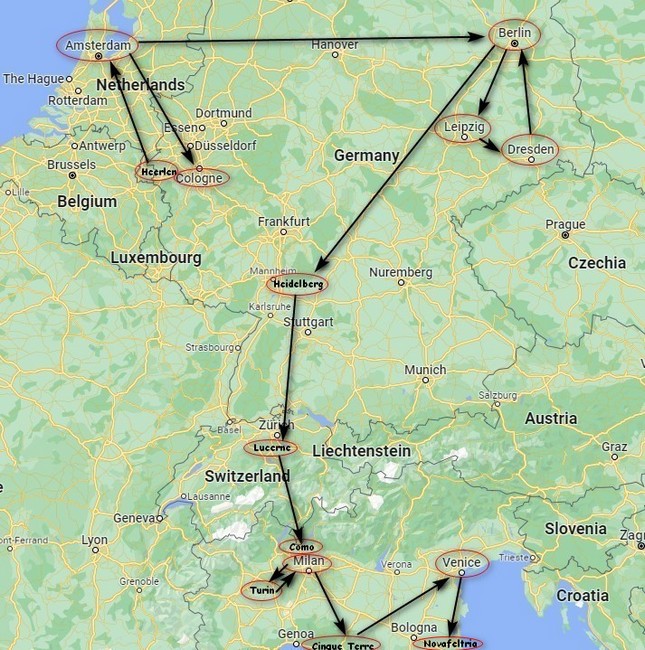
Amsterdam, Netherlands
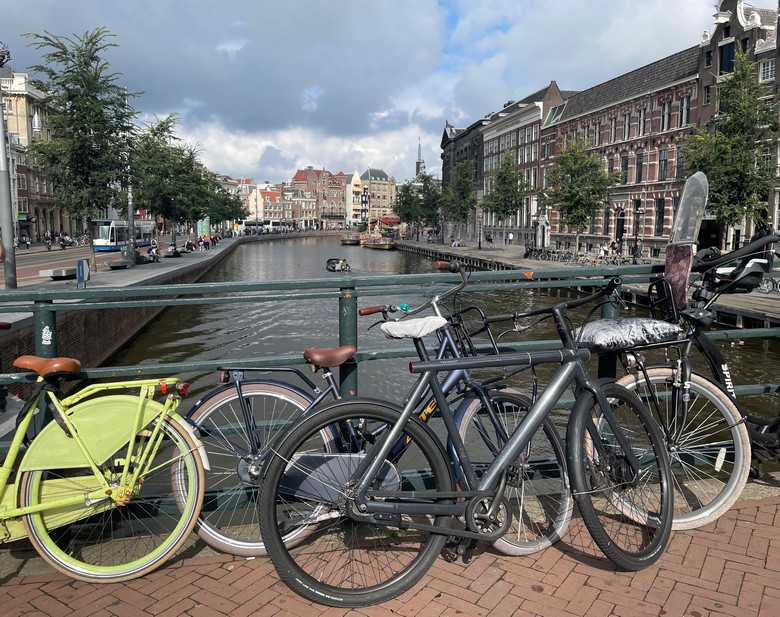
Familiar sights: the canal and bicycles.
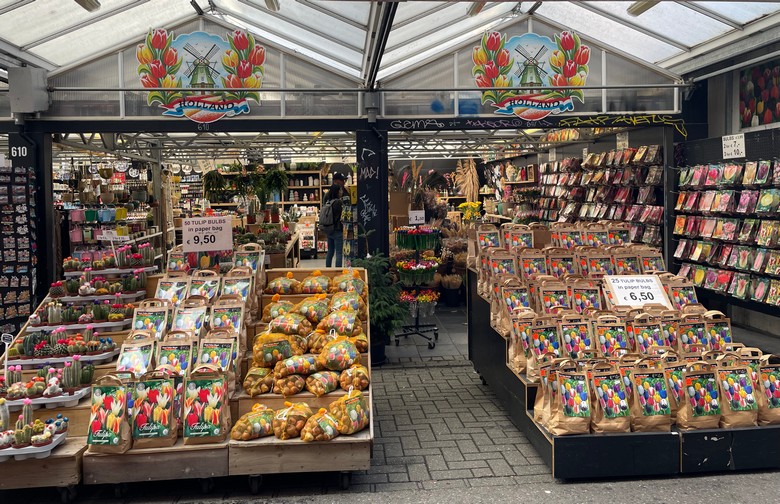
Tulip bulbs
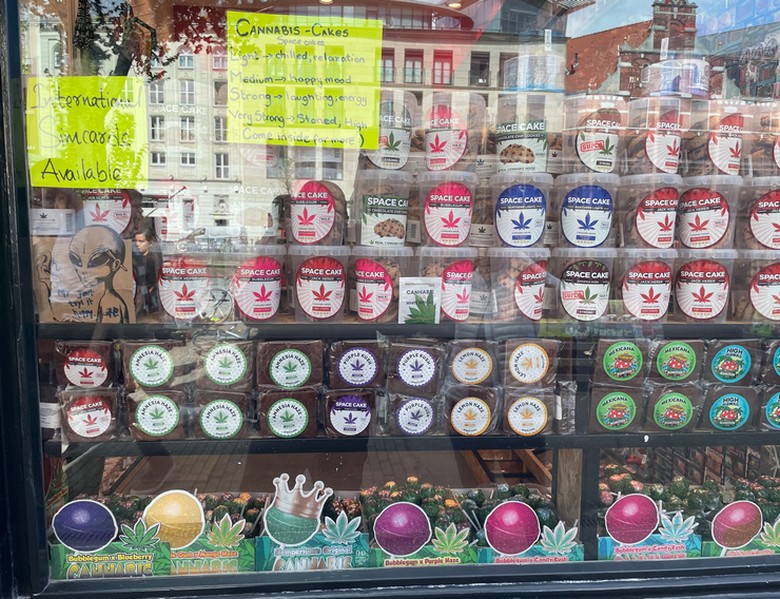
Weeds galore
Cologne, Germany
Construction of the Cologne Cathedral began in 1248 and finally completed in 1880. It suffered 14 hits by aerial bombs during World War II.
Beautiful 19th century stained glass, with the Petrus-und Wurzel made in 1509.
Heerlen, Netherlands
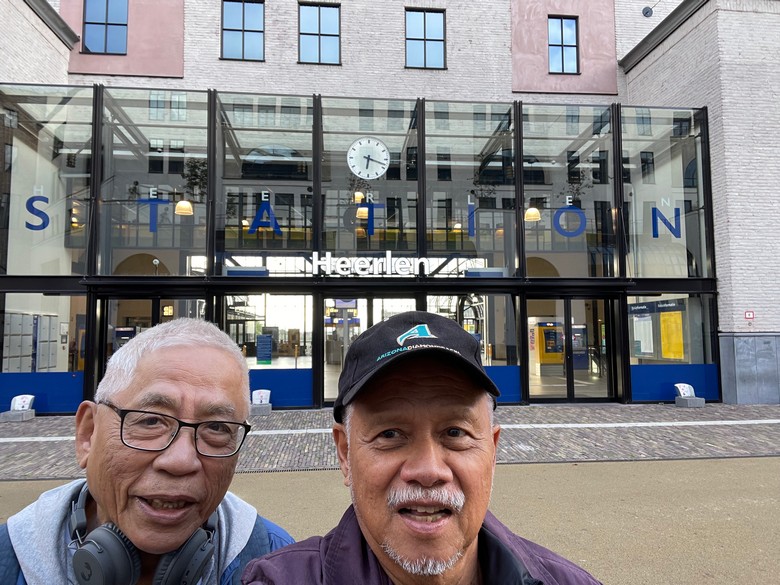
Brod Joe de Vera meets me at the Heerlen train station.
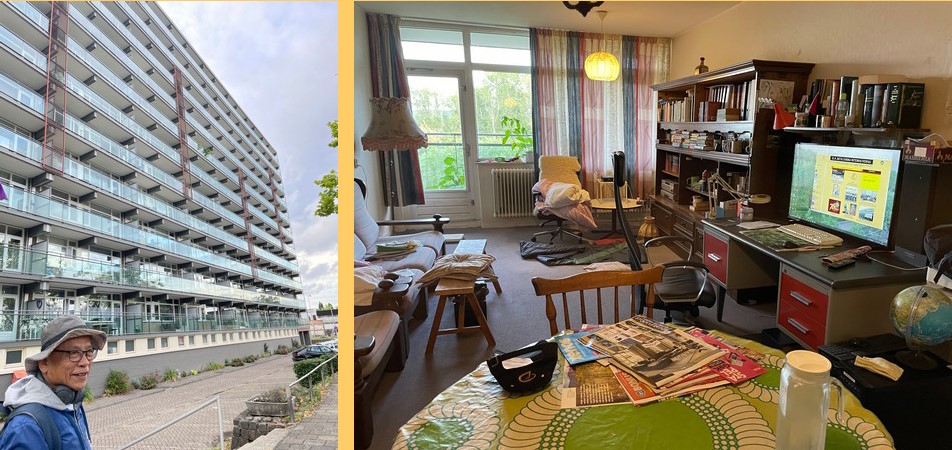
I was supposed to go back to Amsterdam, but because of the unexpected train strike I had to sleep the night in Joe's flat. Thanks brod!
Berlin, Germany
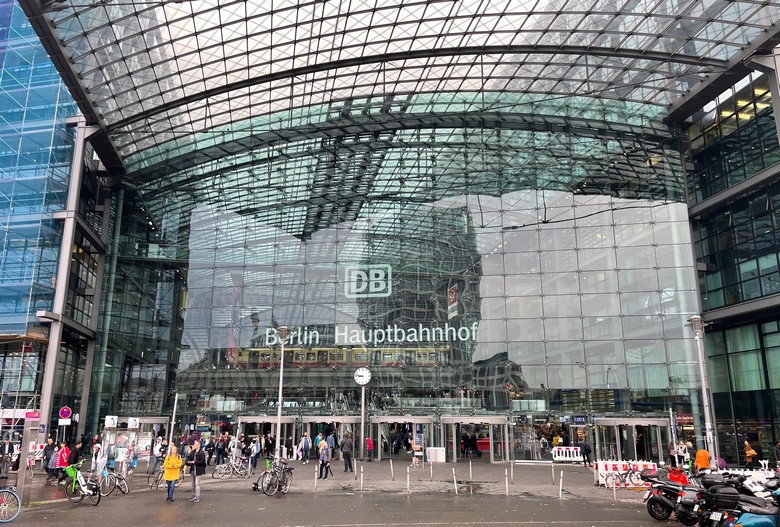
Berlin Hauptbahnhof, the huge Central Train Station with S-Bahn, U-Bahn Train and Tram lines, and shops and restaurants inside.
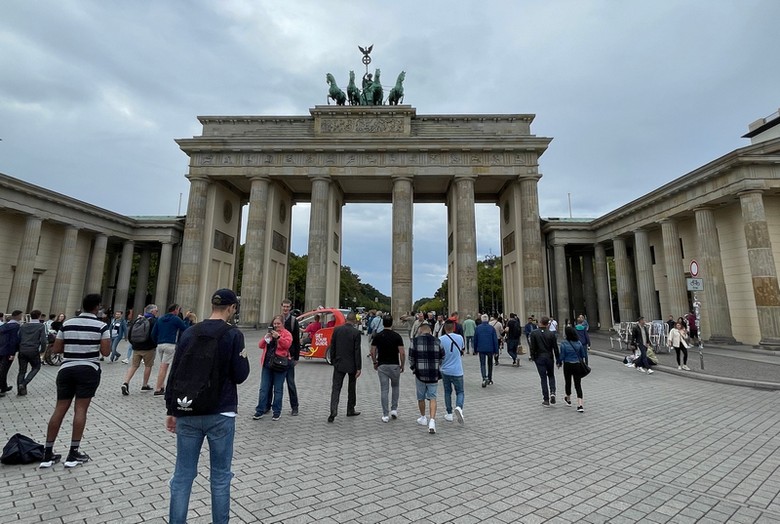
Brandenburg Gate is an 18th-century neoclassical monument built in 1791 by Prussian King Frederick William II.
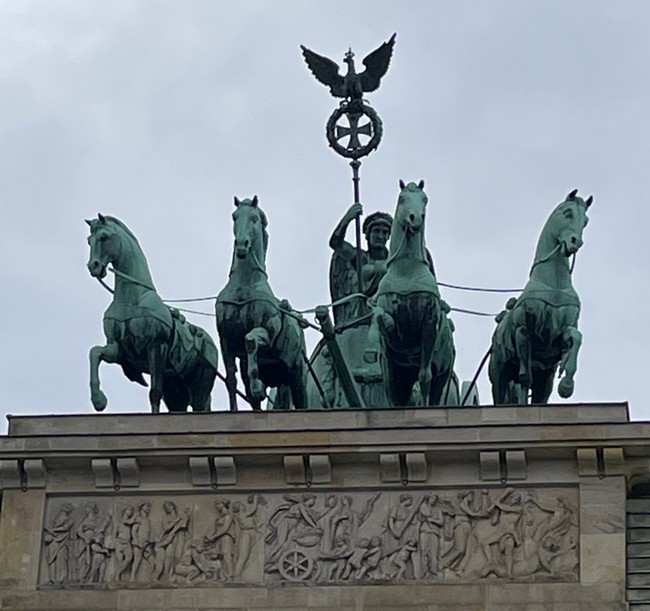
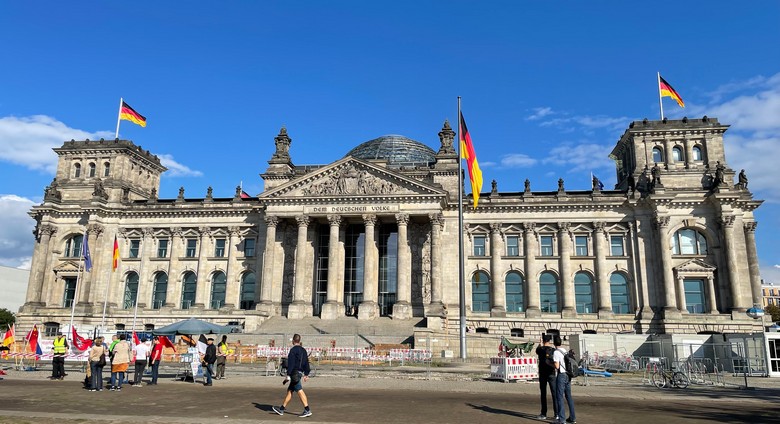
Reichstag, built in 1894, houses the Bundestag, the lower house of Germany's parliament.
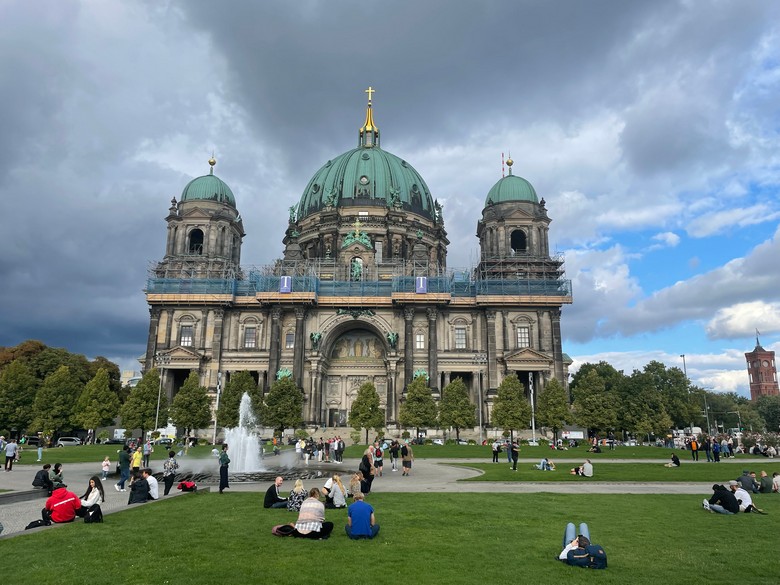
Berlin Cathedral, consecrated in 1454 as a Roman Catholic chapel, is now the largest Protestant church in Germany.
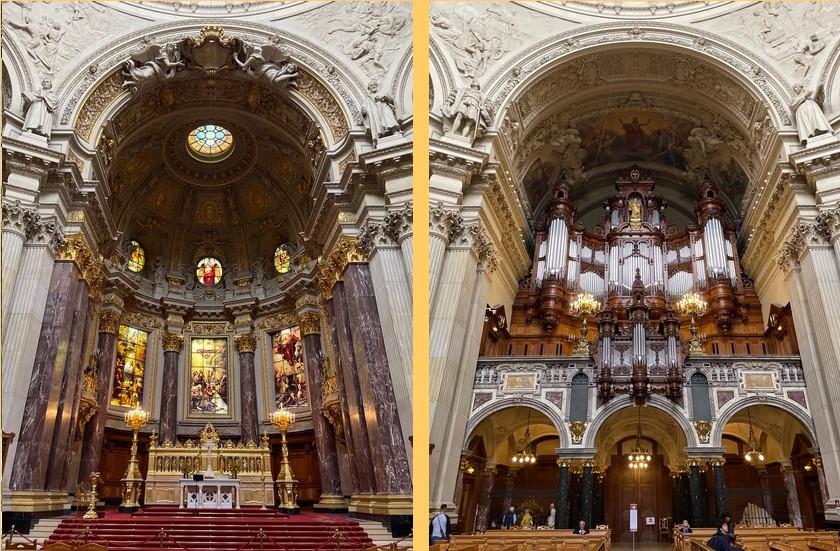
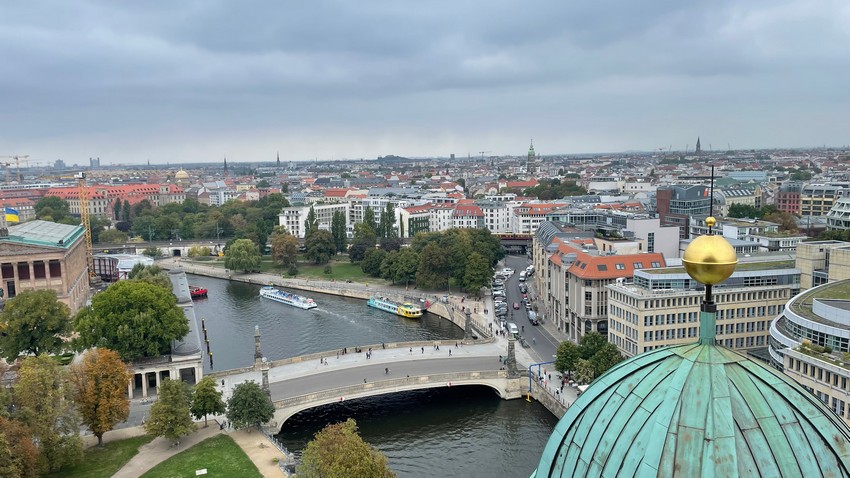
Climbing to the top of the dome gives a vista of the city.
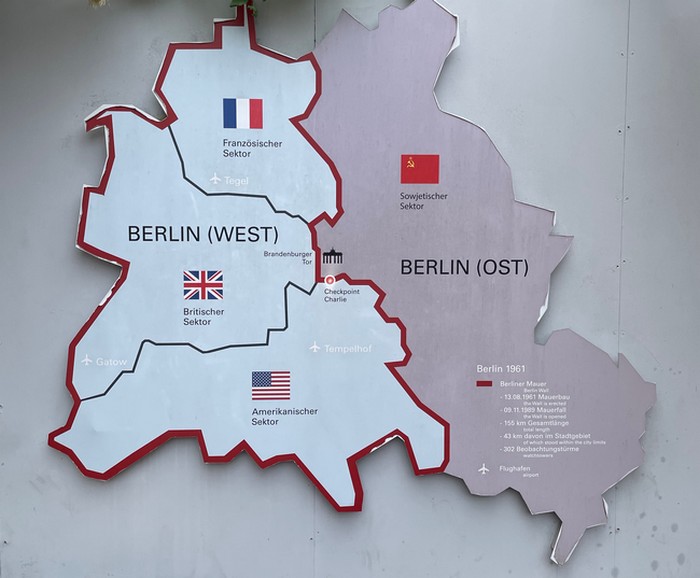
A city divided by the occupying Allied WW2 victors: West Berlin (France, UK, US) and East Berlin (USSR).
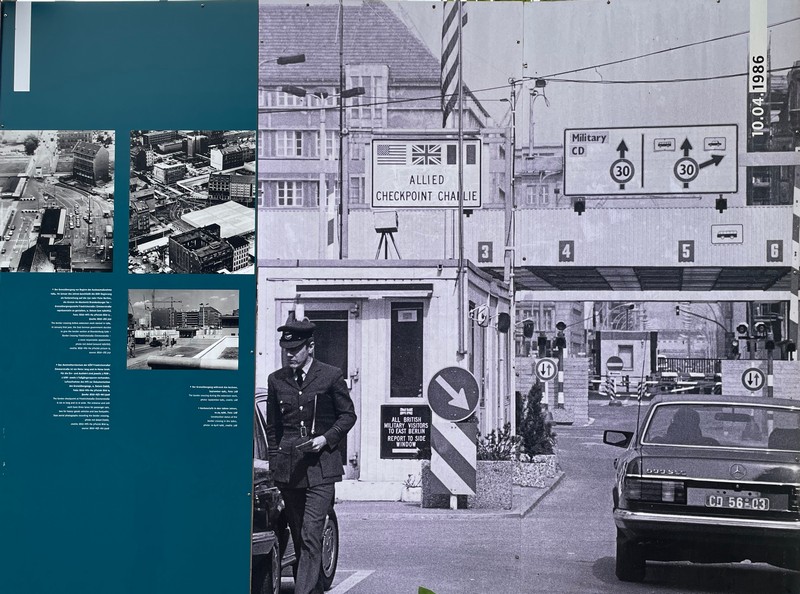
A mural of Allied Checkpoint Charlie after the construction of the Berlin Wall in 1961.
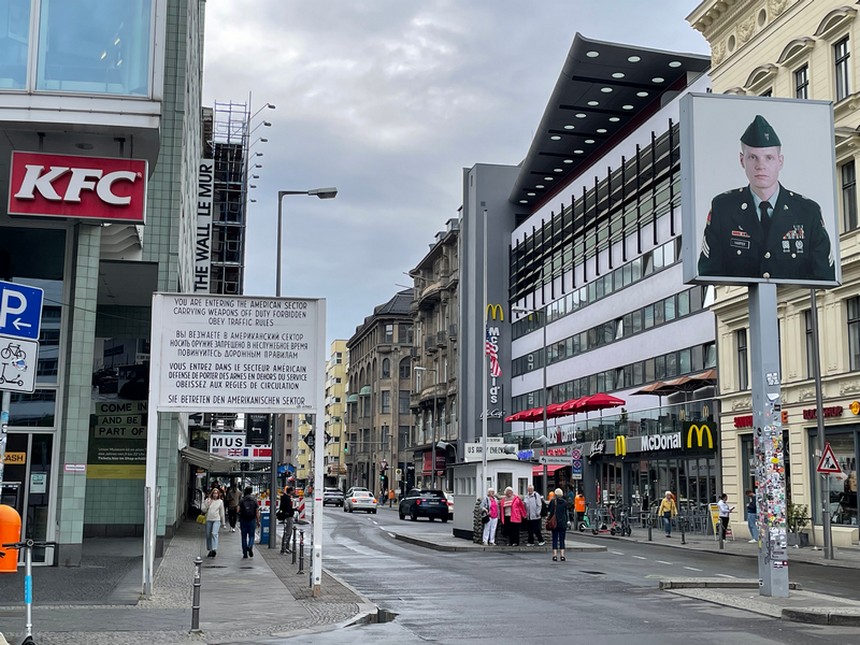
Checkpoint Charlie is now a tourist attraction.
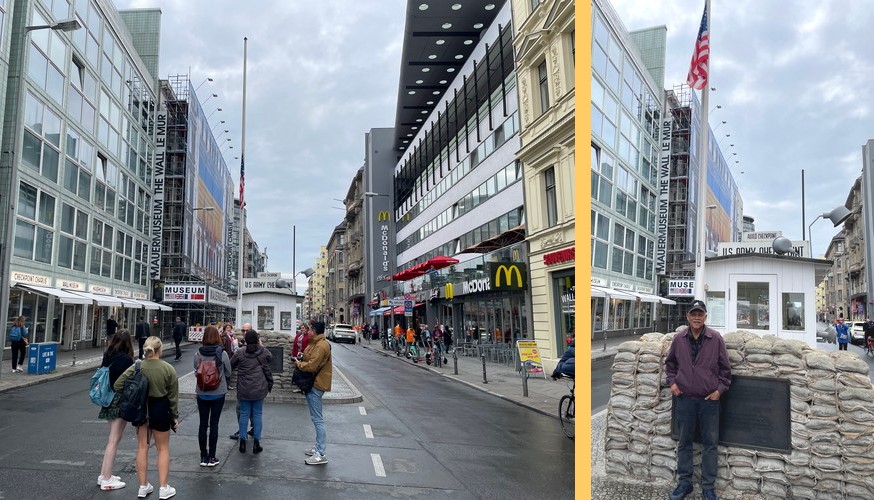

A mural of the constuction of the Berlin Wall in 1961.
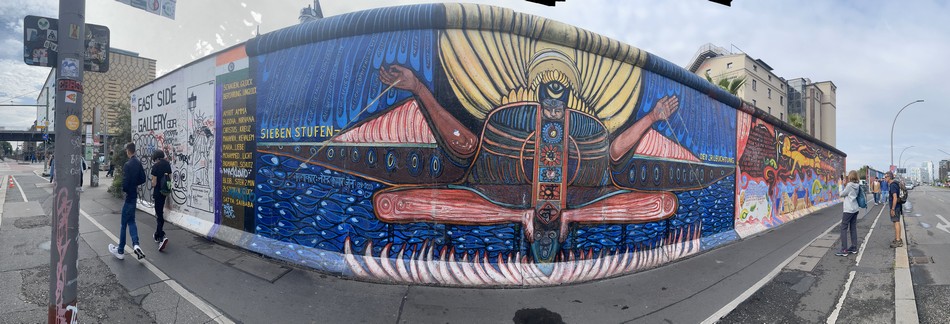
Berlin Wall remnants now. The Wall fell in Nov. 1989. It was followed in Oct. 1990 by the unification treaty of Germany.

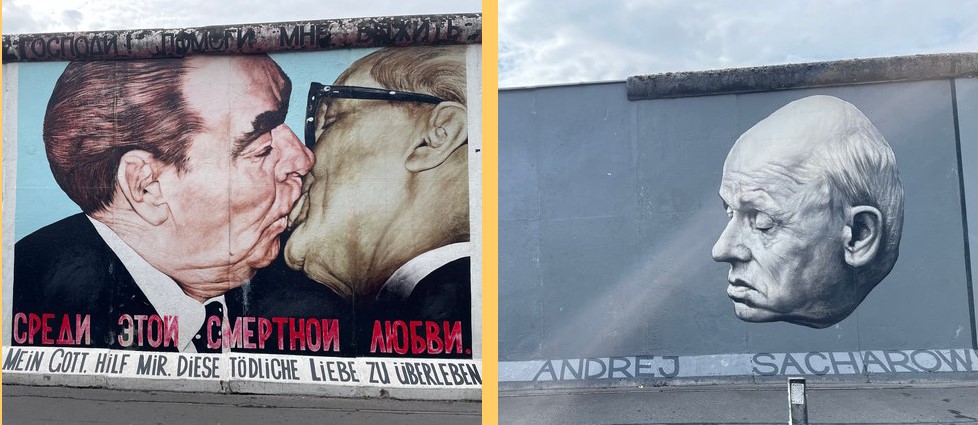
"Bruderkuss" between Soviet and East German heads, Leonid Brezhnev and Erich Honecker. Russian physicist and human rights activist Andrei Sacharov.
Leipzig, Germany
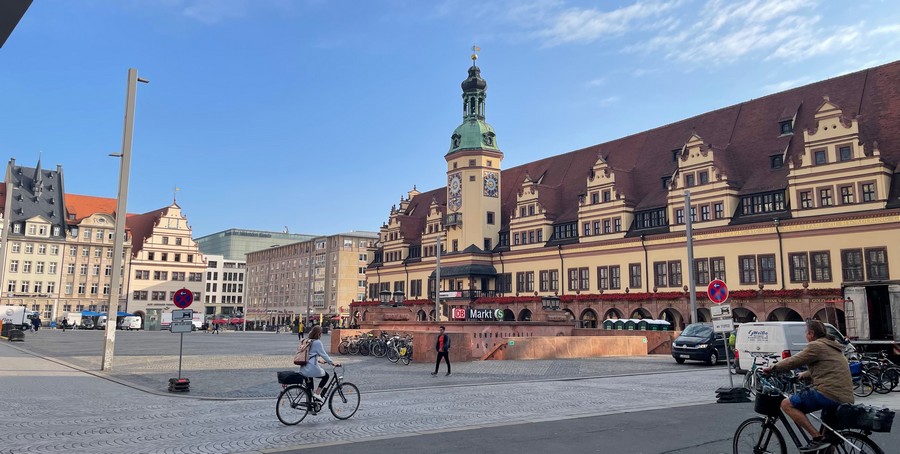
Destroyed by Allied bombing, becoming part of East Germany, it is Germany's fastest growing city. Rizal attended lectures at the University of Leipzig.
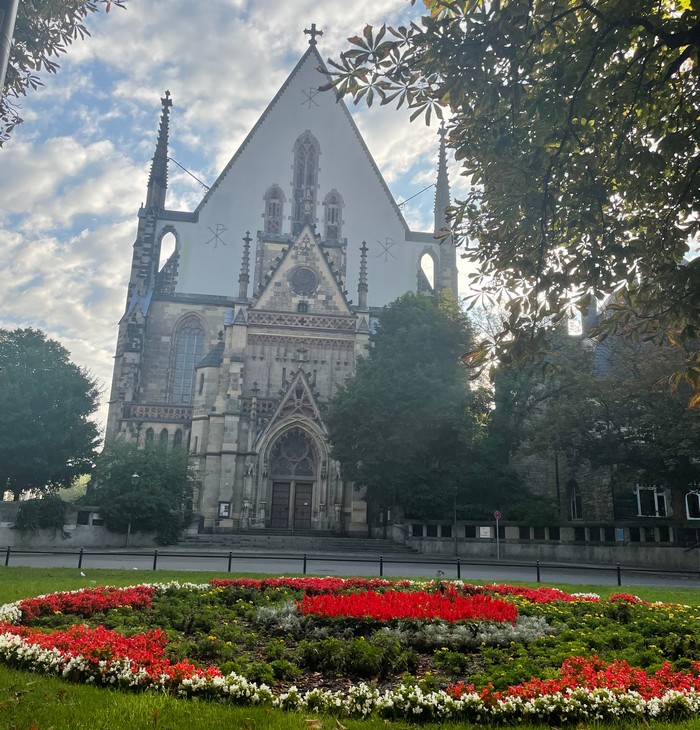
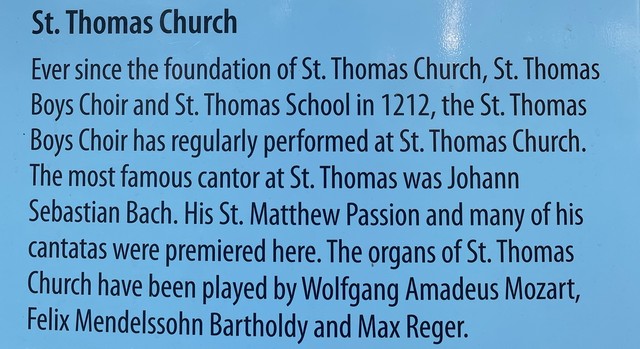
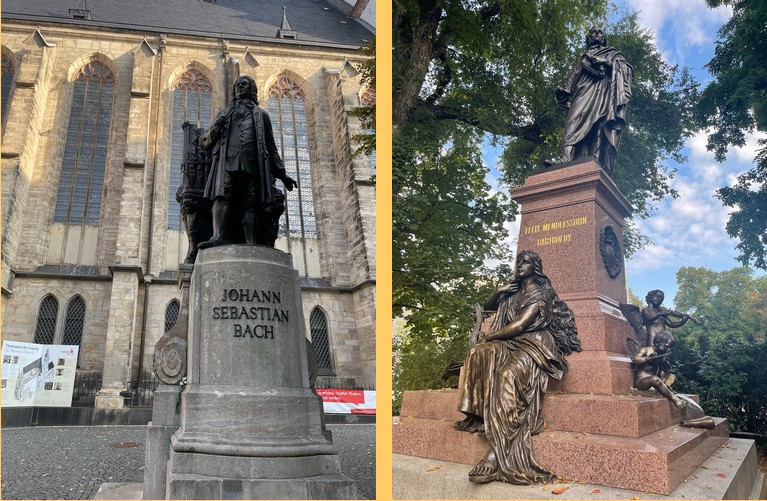
Statues of church director and cantor Johann Sebastian Bach (from 1723-1750) and organist Felix Mendelssohn.
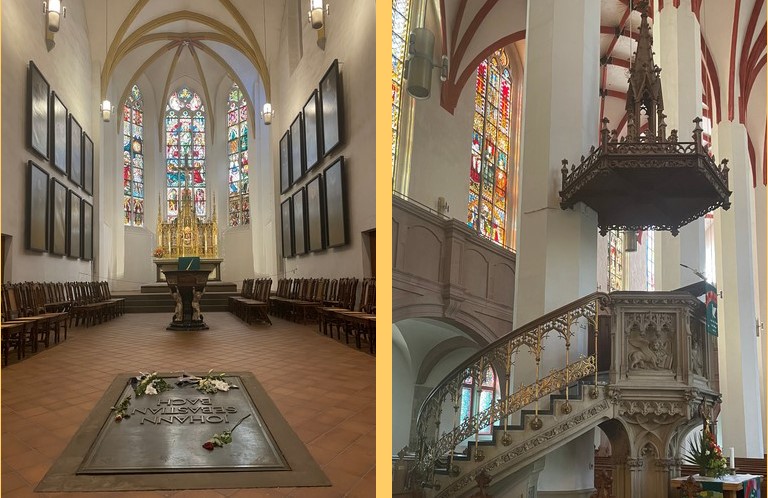
Tomb of Johann Sebastian Bach inside church. Martin Luther spoke from the church pulpit.
Dresden, Germany
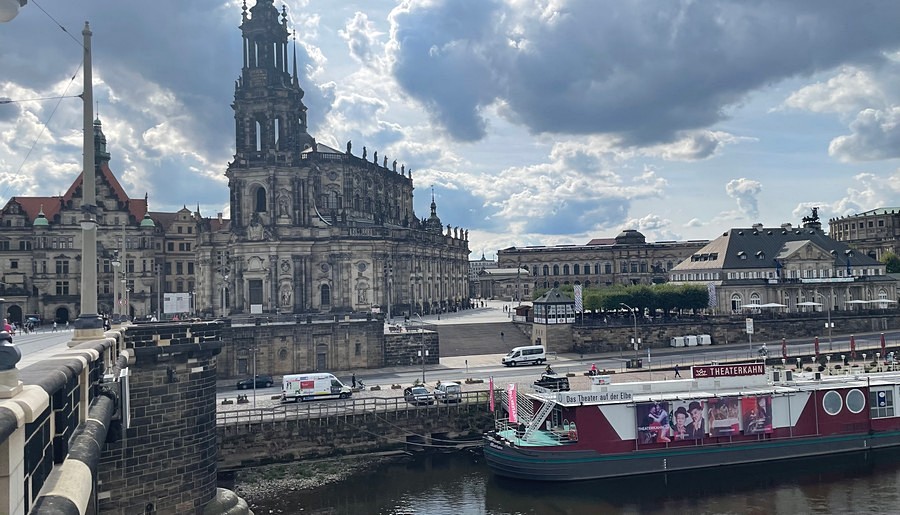
Known as "Florence of the Elbe" owing to its architecture and art treasures, Dresden was almost completely destroyed by WW2 "terror bombing".
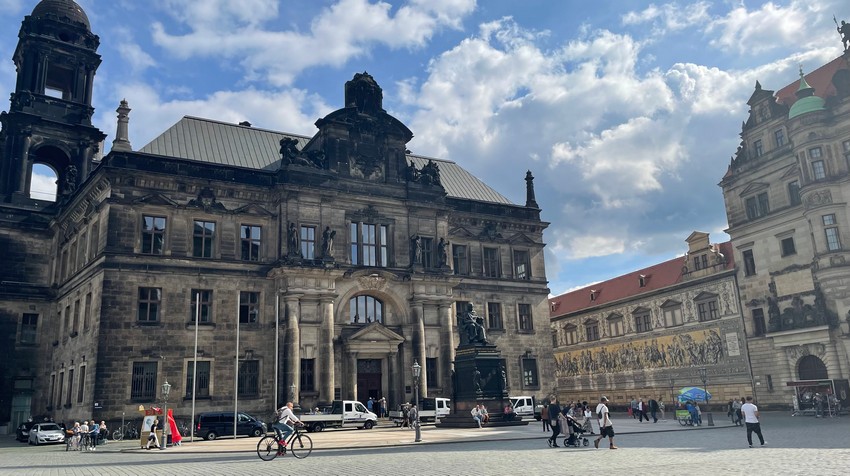
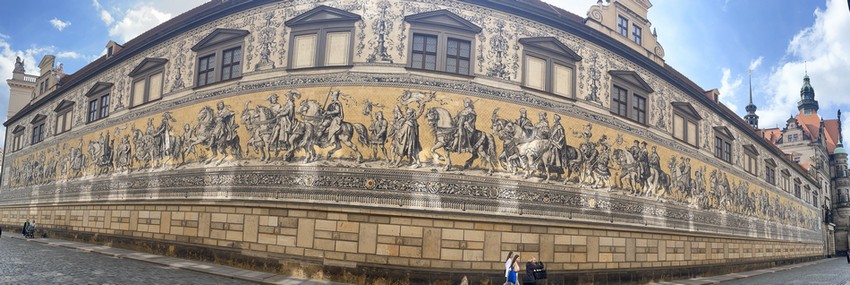
Panoramic shot of the Furstenzug mural on the outer wall of Dresden Castle
"The Fürstenzug (Procession of Princes) is a large mural of a mounted procession of the rulers of Saxony. It was originally painted between 1871 and 1876 to
celebrate the 800th anniversary of the Wettin Dynasty, Saxony's ruling family. In order to make the work weatherproof, it was replaced with approximately
23,000 Meissen porcelain tiles between 1904 and 1907. With a length of 102 metres (335 ft), it is known as the largest porcelain artwork in the world.
The mural displays the ancestral portraits of the 35 margraves, electors, dukes and kings of the House of Wettin between 1127 and 1904." - Wikipedia
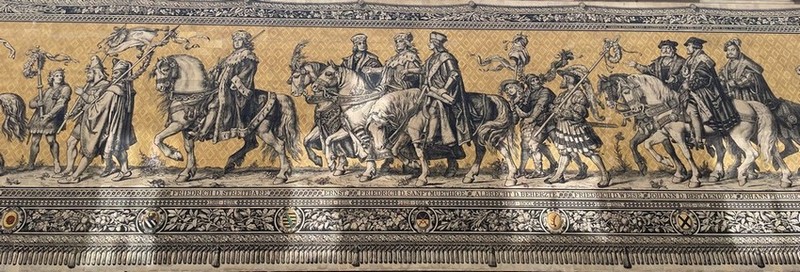
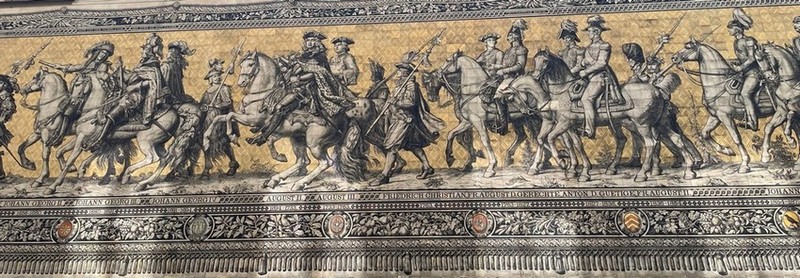
Above are two still shots of the mural, with the names of the royals underneath.
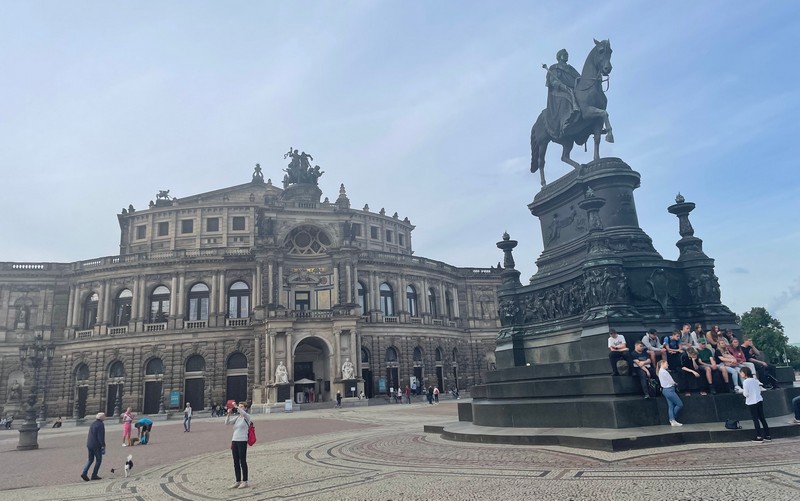
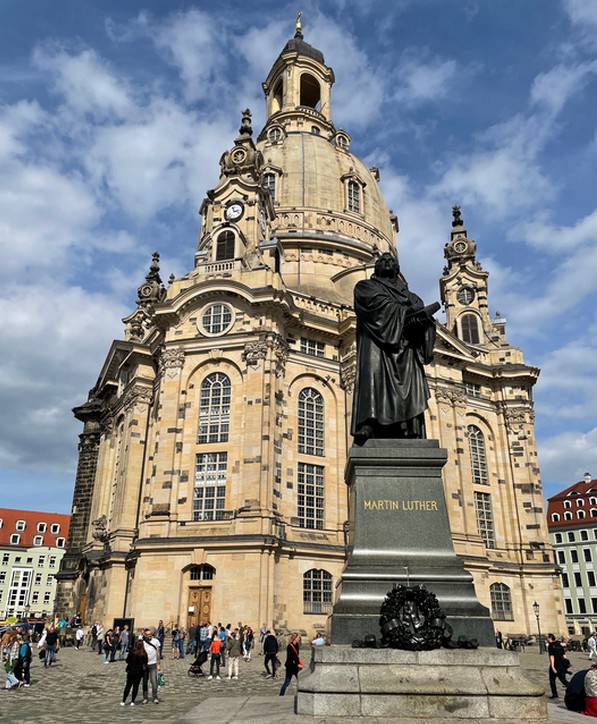
Frauenkirche (Church of Our Lady) built 1726-1743 was destroyed and reconstructed 1993-2005.
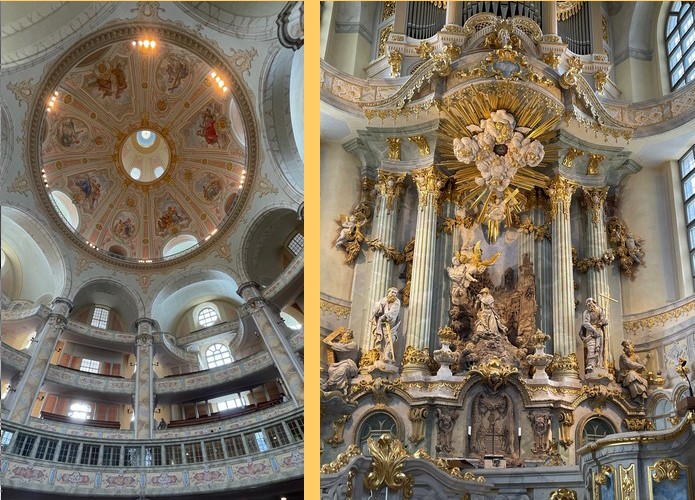
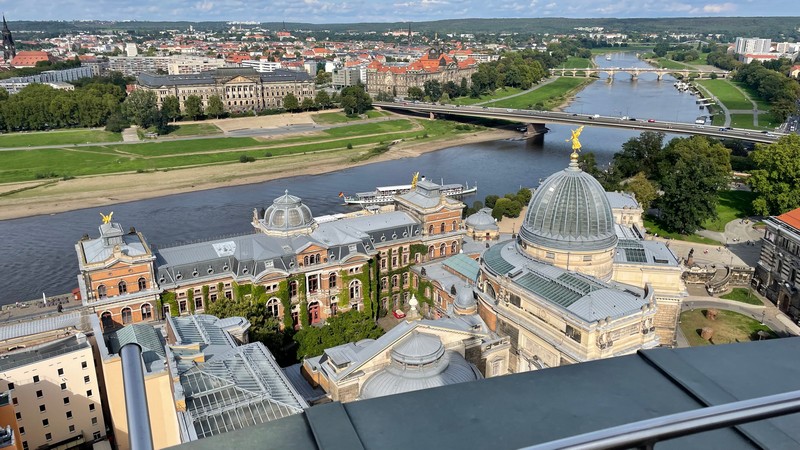
View of Dresden from the top of the church dome.
Wilhemsfeld and Heidelberg, Germany
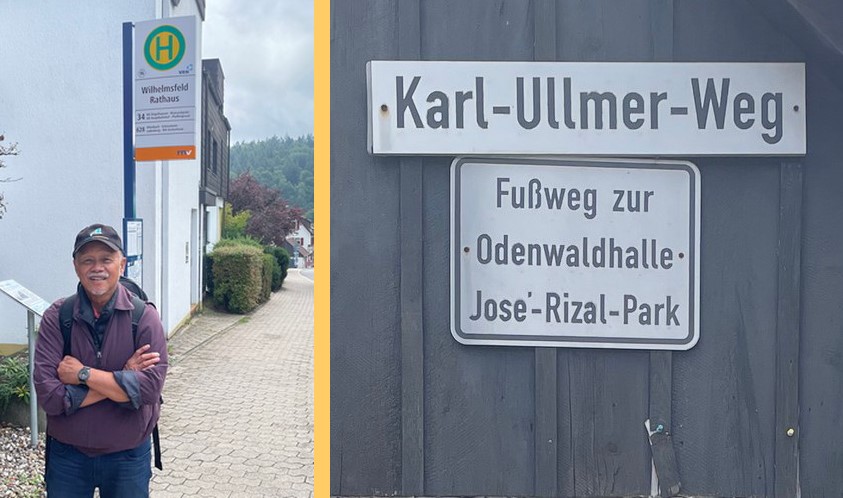
From Heidelberg train station, I took the bus to Wilhelmsfeld, 21 kms. away, to visit Jose Rizal Park.
I happened to sit and chat with a teenager who lives on Jose Rizal Street and who walked with me as my guide.
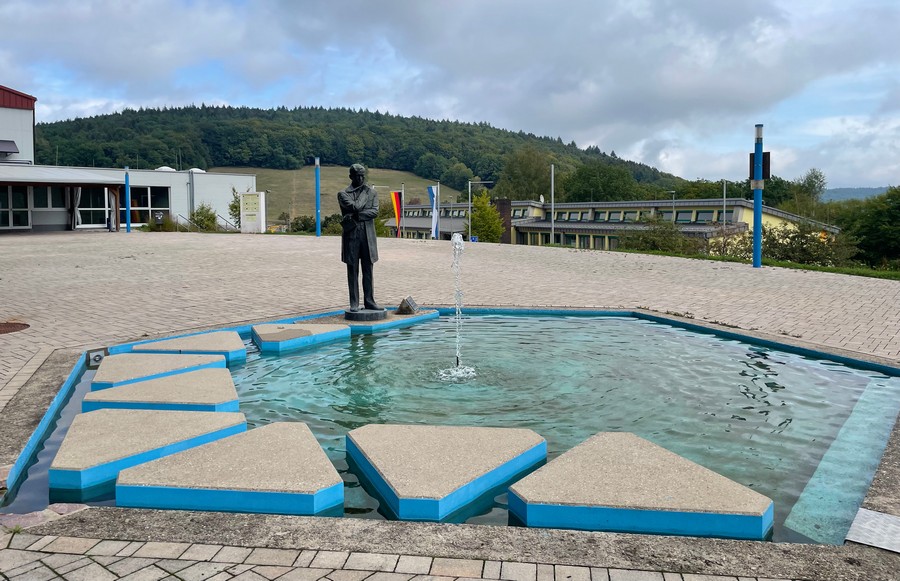
Jose Rizal Park is adjacent to the Wilhelmsfeld elementary school. Filipinos gather and picnic here on Philippine national day celebrations.
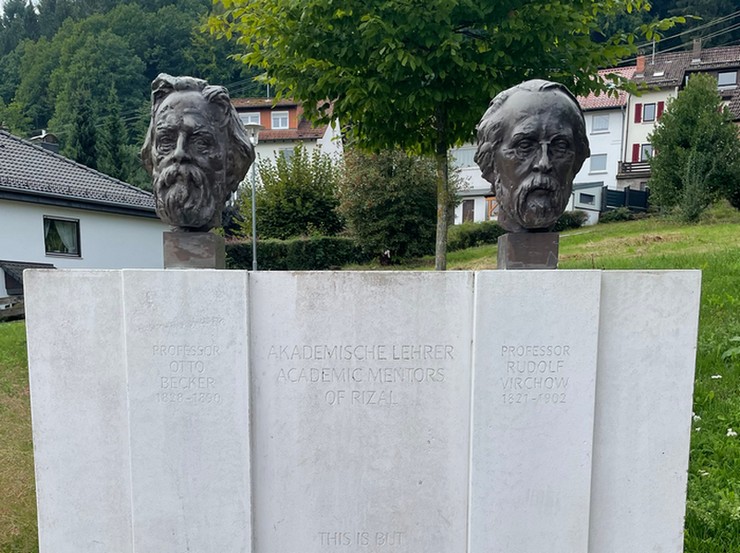
Busts of "Academic Mentors" of Rizal: Prof. Dr. Otto Becker, opthalmologist; and Prof. Dr. Rudolf Virchow, pathologist.
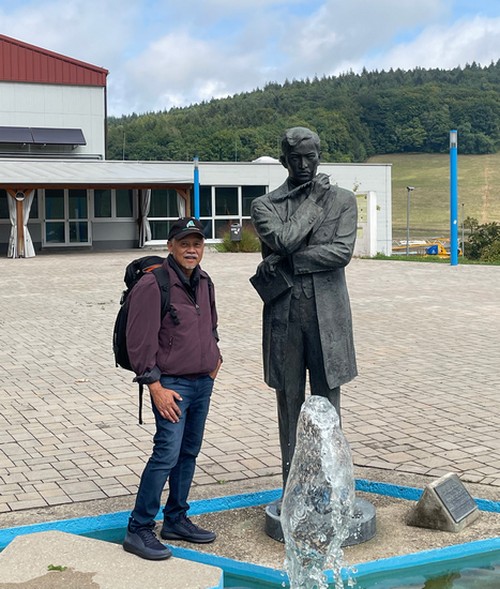
In awe and admiration of Rizal, I have been to his ancentral house in Calamba,
his jail cell in Intramuros, and to his memorial statues in Manila and Madrid.
Next stop: his home in exile and museum in Dapitan, Zamboanga del Norte.
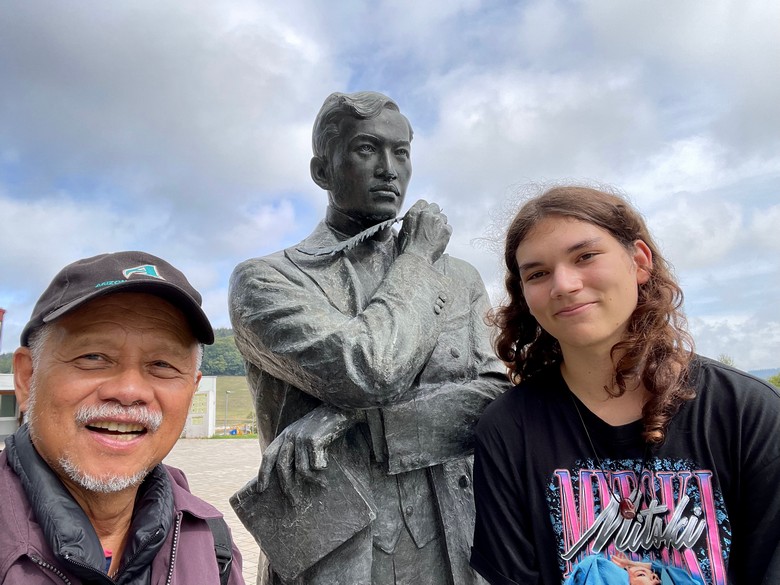
Marek, the German teenager, told me that they were taught about Jose Rizal in the elementary school.
He also said that he could see that I was so proud standing there by Rizal's statue. I was.
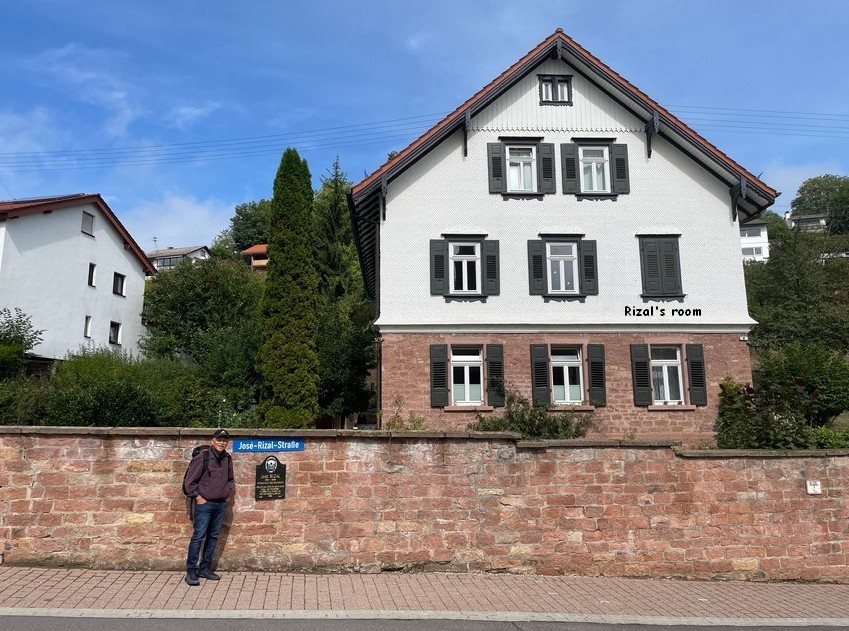
At Jose Rizal Street is the house of Pastor Karl Ullmer where Rizal lived for 3 months and learned "high" German. Later in Berlin he was
accepted to the prestigious Berlin Ethnographic, Anthropological and Geographic Society where he delivered a paper in metrical art.
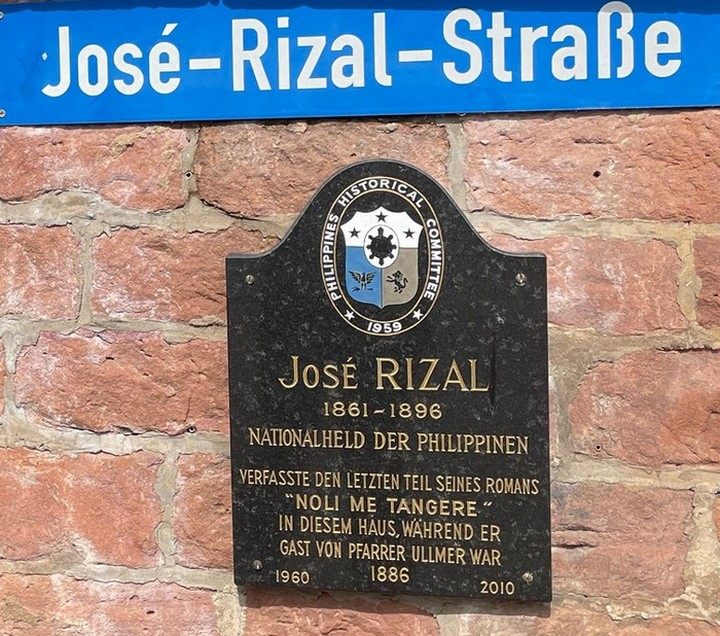
Rizal completed the last chapters of "Noli Me Tangere" in Pastor Ullmer's house. He celebrated his 25th birthday here
in 1886. The Ullmer family donated memorabilia from Rizal's room and letters/other papers to the Philippine government.
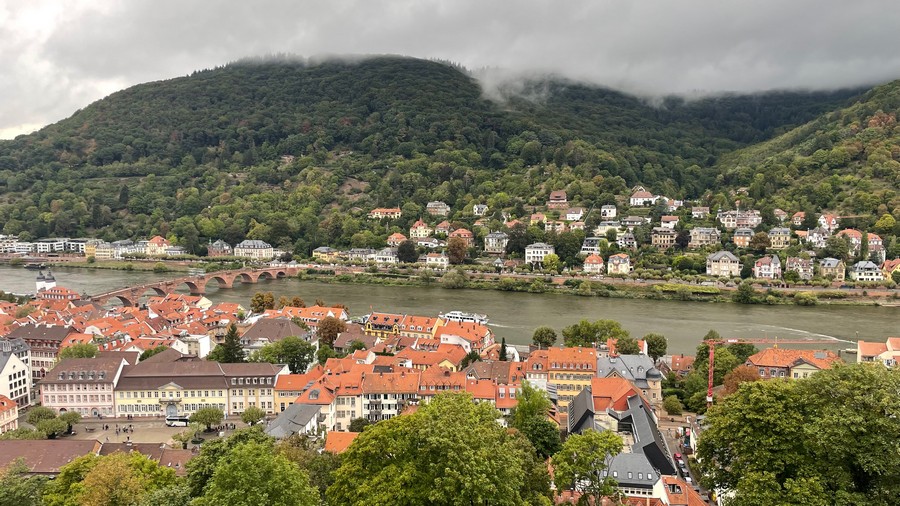
Back to Heidelberg to retrace the steps of Rizal. He wrote his poem "A Las Flores de Heidelberg" fascinated by the flowers along the Neckar River.
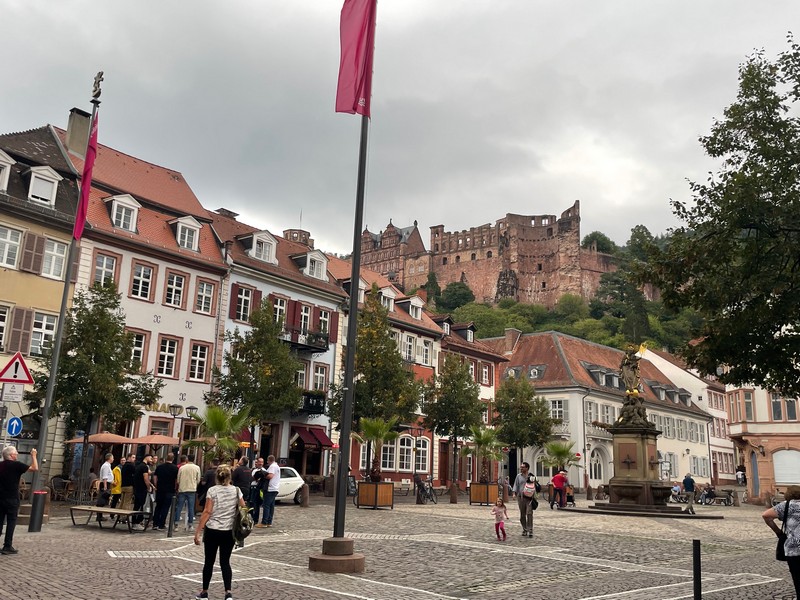
Old Town Heidelberg with the world famous ruins of Heidelberg Castle on the hillside.

Built around 1214 by King Ruprecht of Germany, the castle was destroyed by lightning and French troops. It has been partially reconstructed.
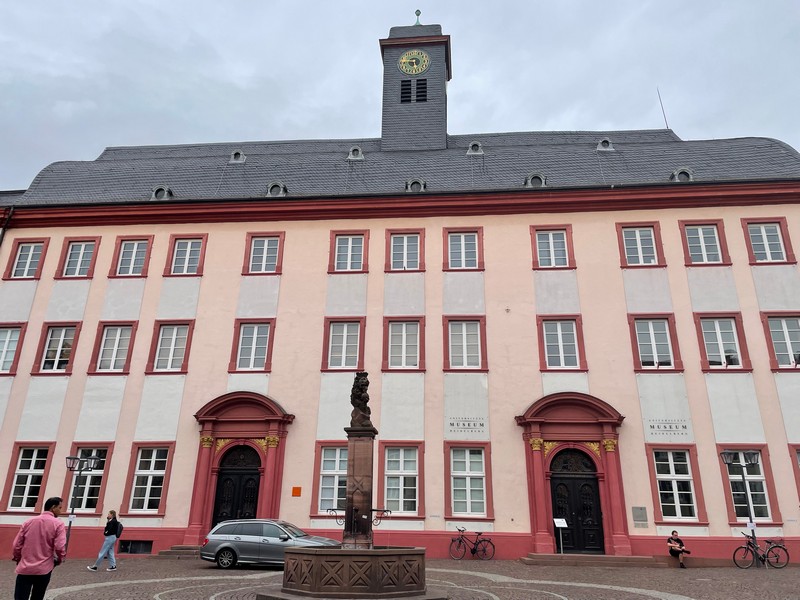
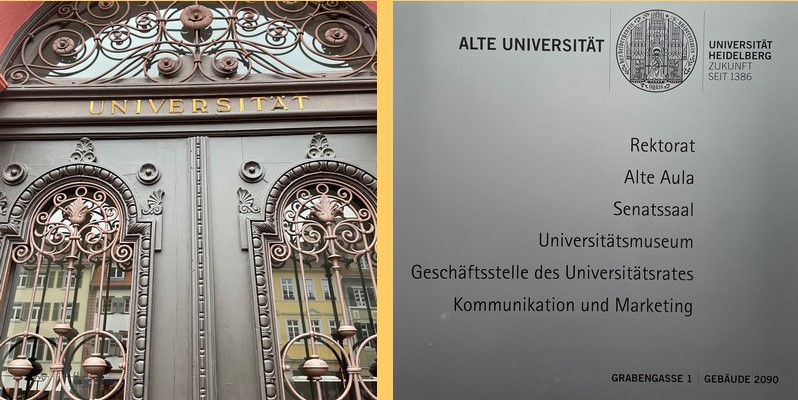
University of Heidelberg, Germany's oldest university was founded in 1386. Rizal attended lectures in opthalmology
as an observer and completed his eye specialization under Prof. Dr. Otto Becker from February-August 1887.
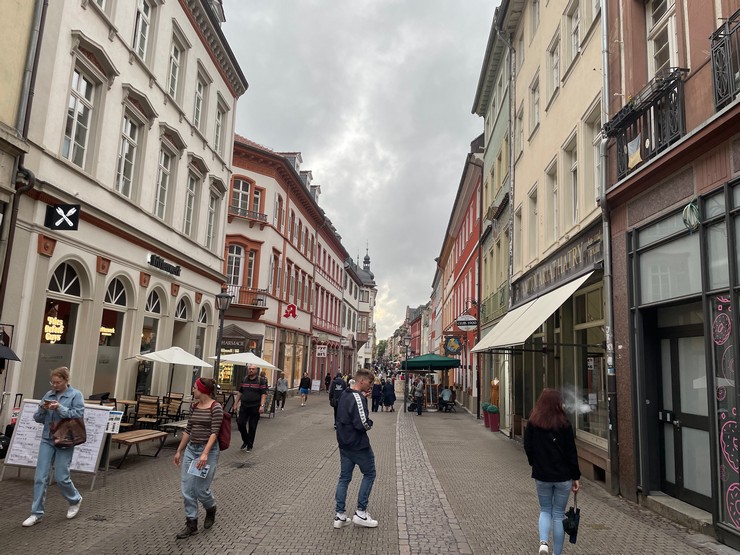
This is Heidelberg's Hauptstrasse (Main Street) where Rizal would walk from the Old Town to the university eye clinic.
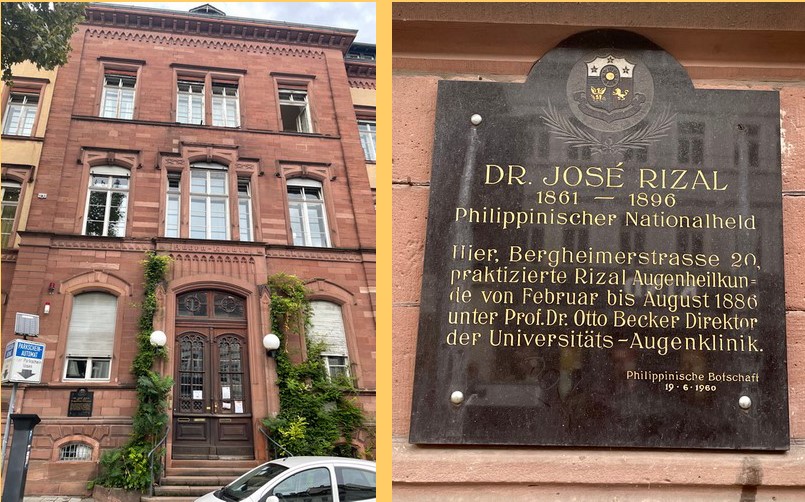
At Heidelberg Eye Hospital at 20 Bergheimer Street Rizal studied under Prof. Dr. Otto Becker and learned how to use the newly
invented opthalmoscope at University of Heidelberg to operate on his mother's eyes for cataract. Earlier in Paris in 1885-86, Rizal worked
as an assistant of Dr. Louis de Vecker, a noted occuplastic surgeon, on various types of surgeries including ocular and cataract surgeries.
(Notes: In 1877-1882 Rizal studied at the University of Santos Tomas completing his four year practical training in medicine at the Hospital de San Juan
de Dios in Intramuros. In 1882-1885, Rizal studied at the Universidad Central de Madrid earning two degrees in Medicine and Philosophy and Letters.)
Lucerne, Switzerland
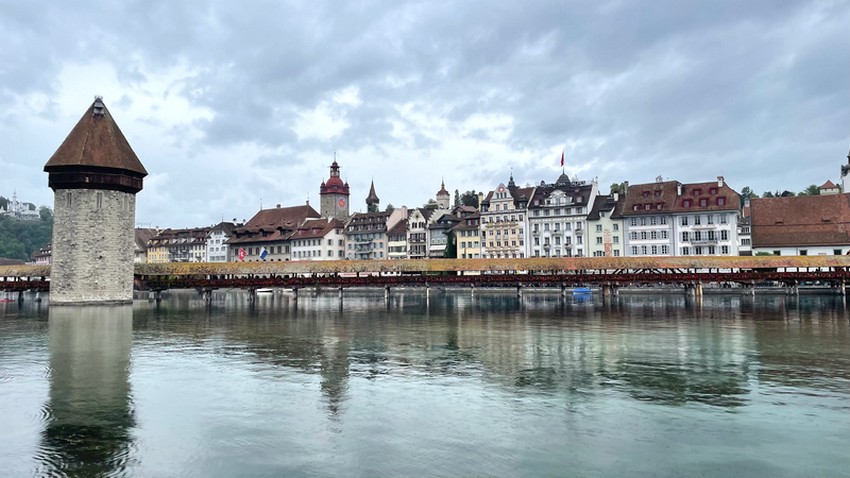
Kapellbrucke, literally Chapel Bridge, is a covered wooden footbridge spanning the river Reuss built in 1365 as part of Lucerne's fortifications.
The water tower was built 30 years earlier. Due to fires, it was reduced from 890 ft. to 672 ft. It is the oldest surviving truss bridge in the world.
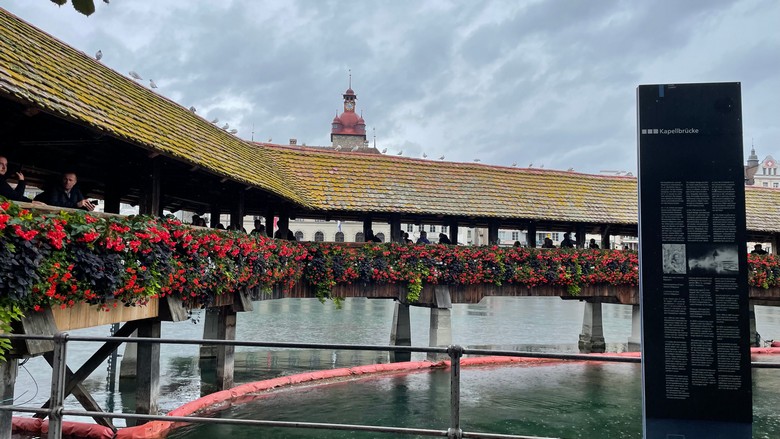
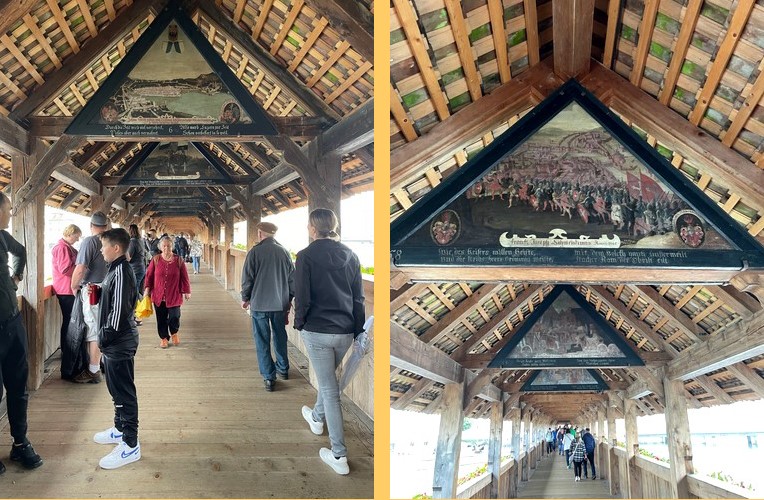
The paintings on the interior triangular frames date back to the 17th century depicting events from Lucerne's history.
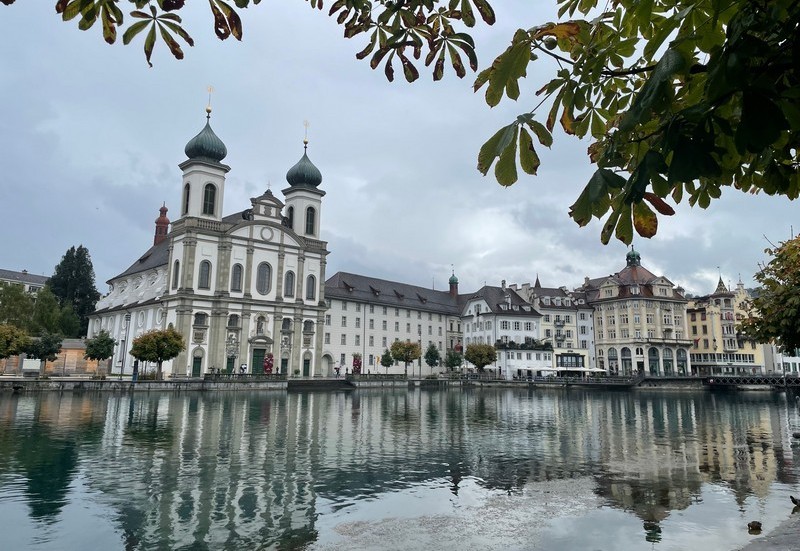
Lucerne Jesuit Church, consecrated in 1677, preserves the predominantly Roman Catholic faith in the city.
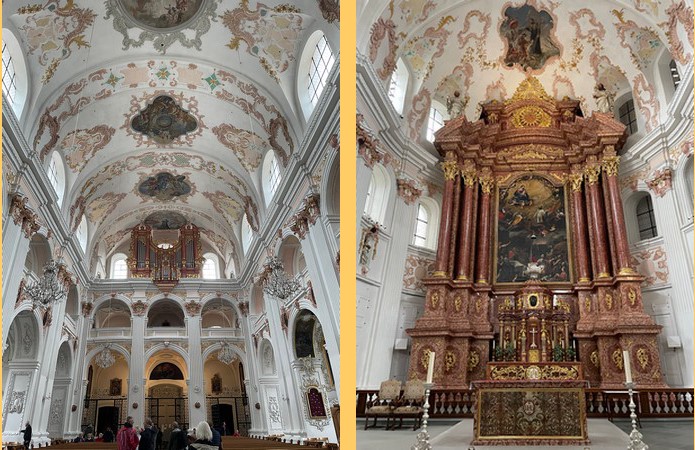
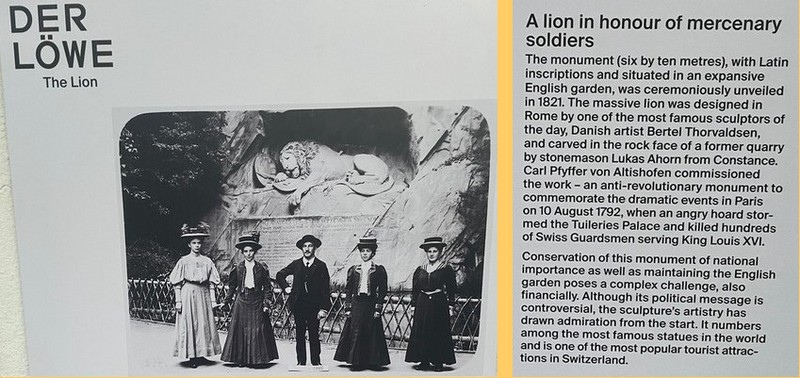
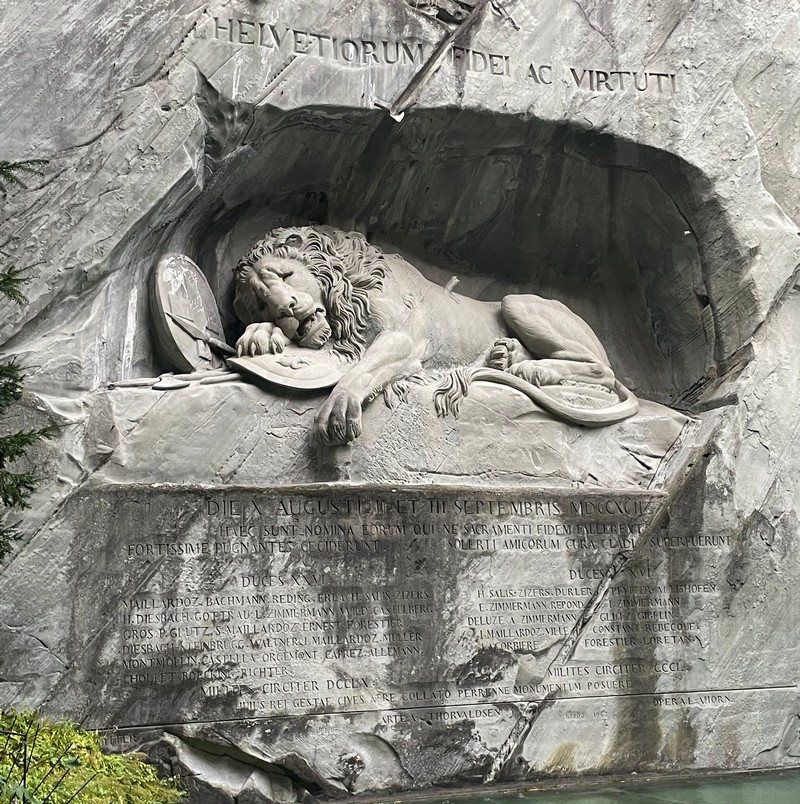
The Lion Monument, or the Lion of Lucerne, is a rock relief in hewn in 1820–21 by Lukas Ahorn and visited annually
by about 1.4 million tourists. It commemorates the Swiss Guards who were massacred in 1792 during the French Revolution.
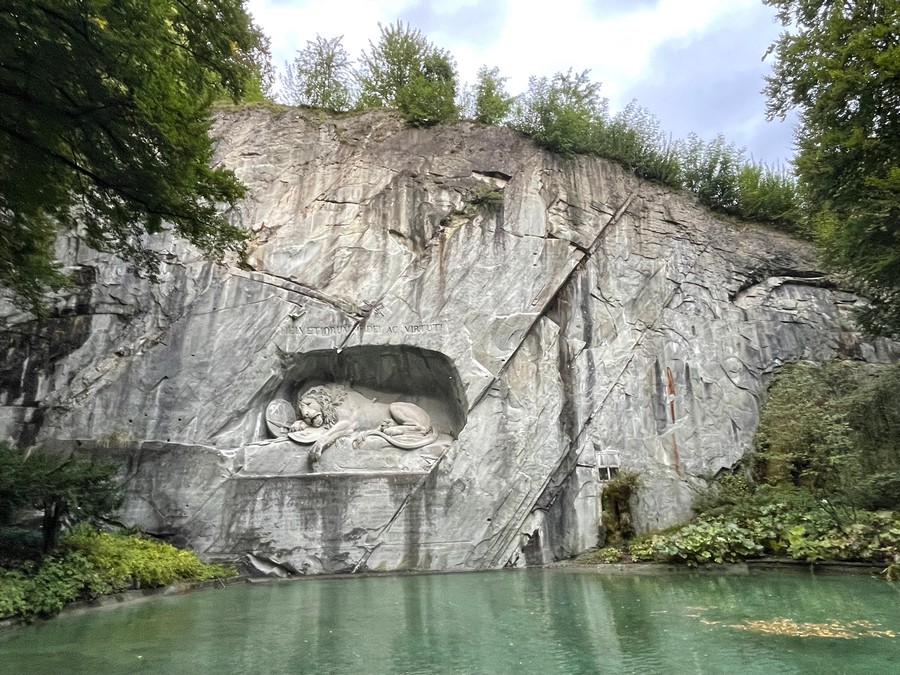
Mark Twain praised the sculpture of a mortally wounded lion as "the most
mournful and moving piece of stone in the world."
Como, Italy

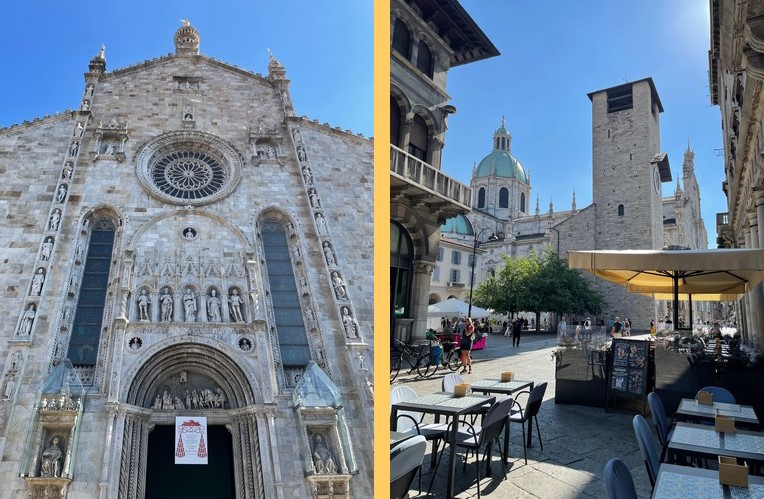
Cathedral of Santa Maria Assunta constructed 1396 in the main square.
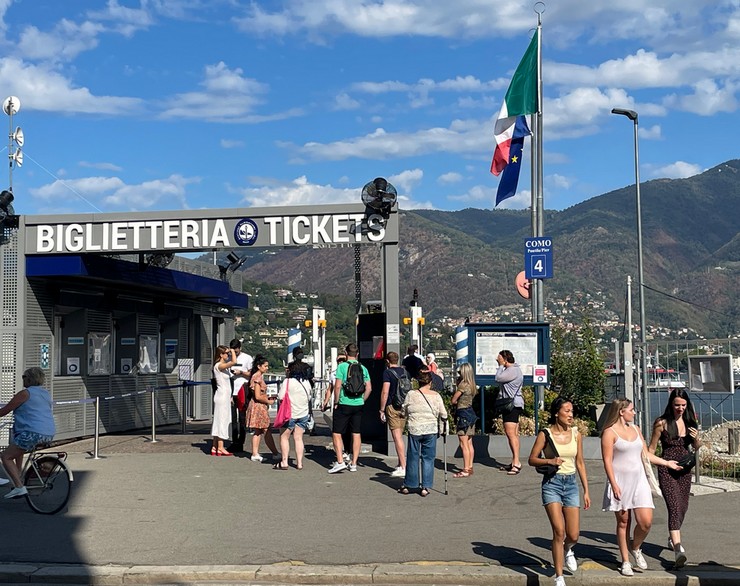
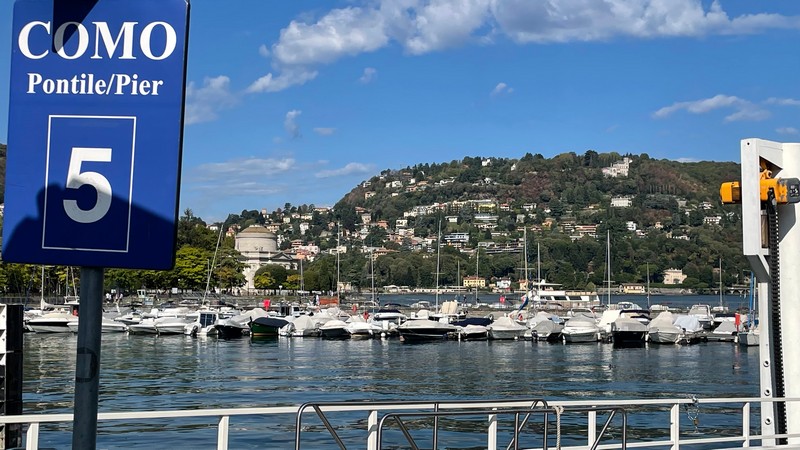
Another labor strike stopped the boat (to Bellagio, Varenna) and train services. I avoided getting stuck taking a Flix bus out to Milan.
Milan, Italy
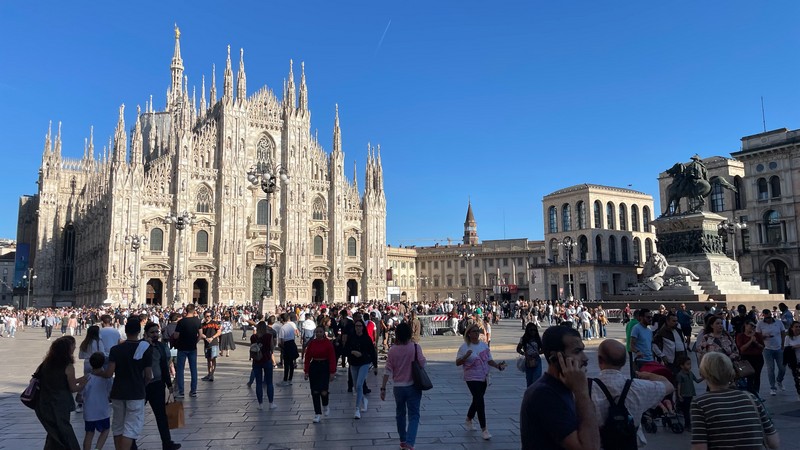
Cathedral-Basilica of the Nativity of Saint Mary, constructed 1386-1810, where Napoleon was crowned King of Italy in May l805.
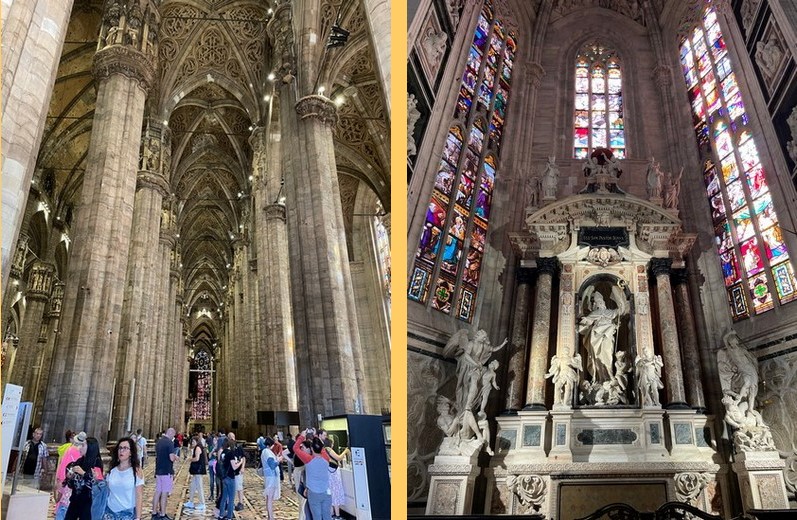
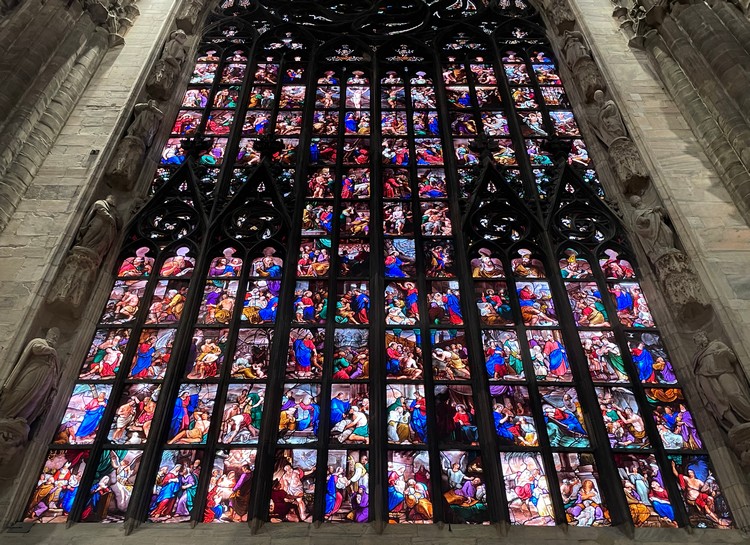
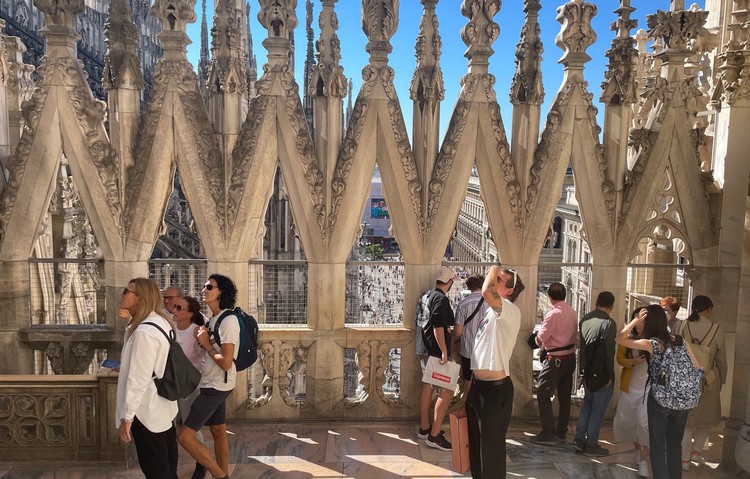
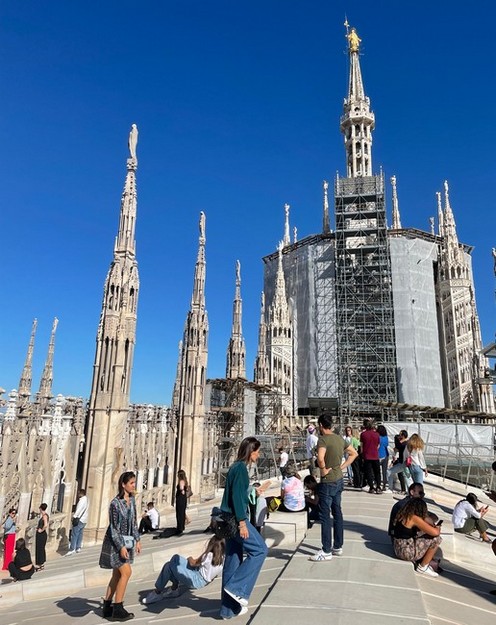
Rooftop with the Madonnina spire, in honor of the Virgin Mary, was erected in 1762.
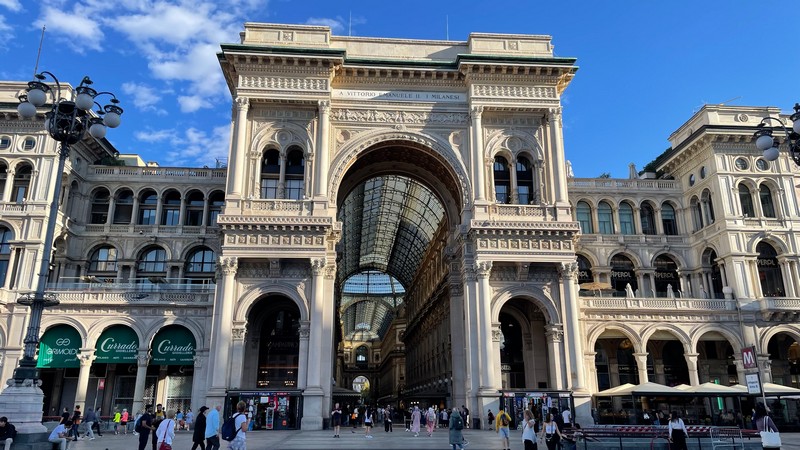

Galleria Vittorio Emanuele II, opened 1877, is Italy's oldest active shopping gallery.
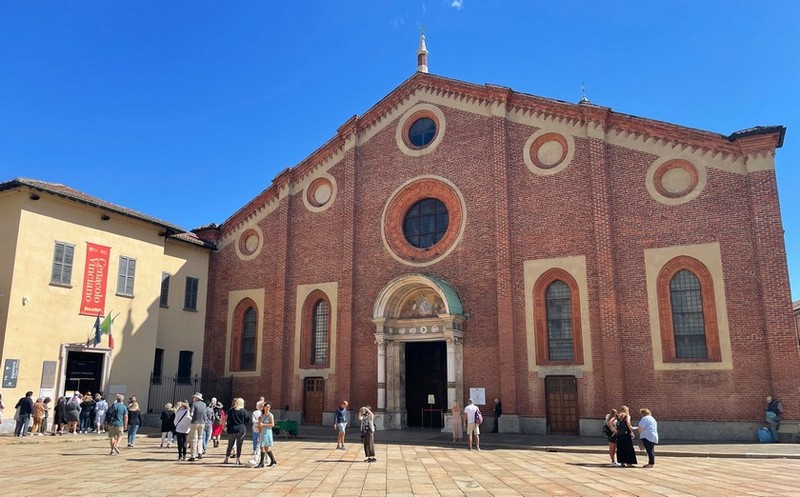
Santa Maria delle Grazie Church contains the "The Last Supper" painting located in the refectory of the convent.
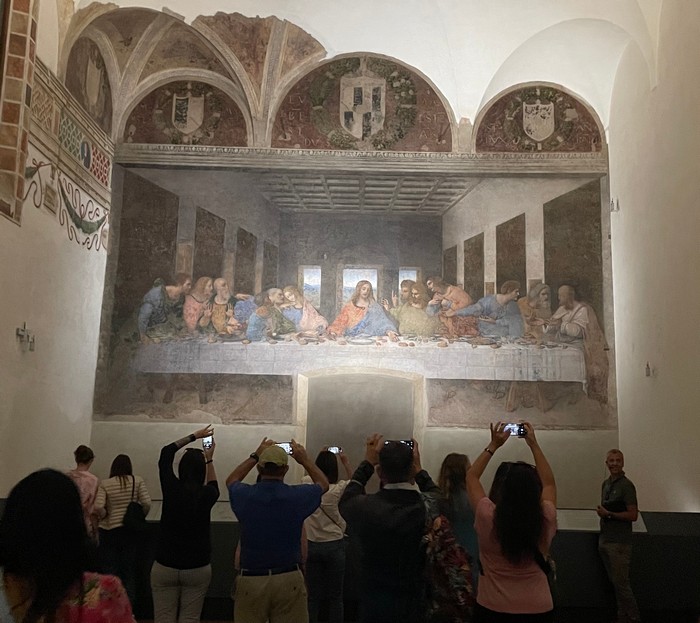
Viewing "The Last Supper", by Leonardo da Vinci 1495-1498, is limited to groups of 25 people for 15 minutes only.
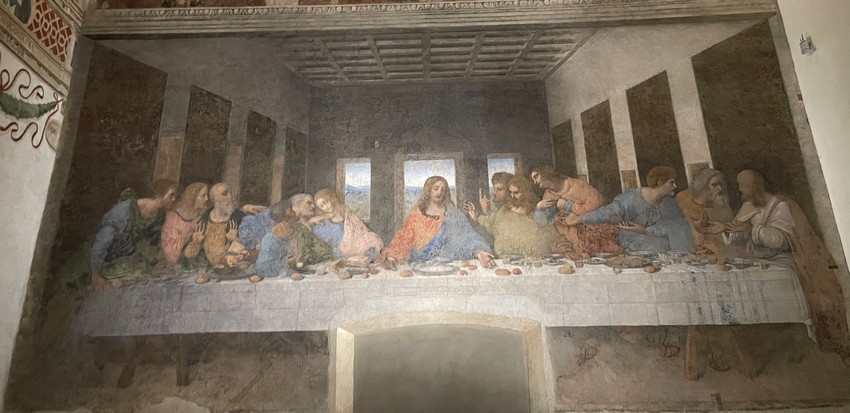
Miraculously the painting, surrounded by sandbags, survived when the church roof and wall collapsed when hit by Allied bombs.
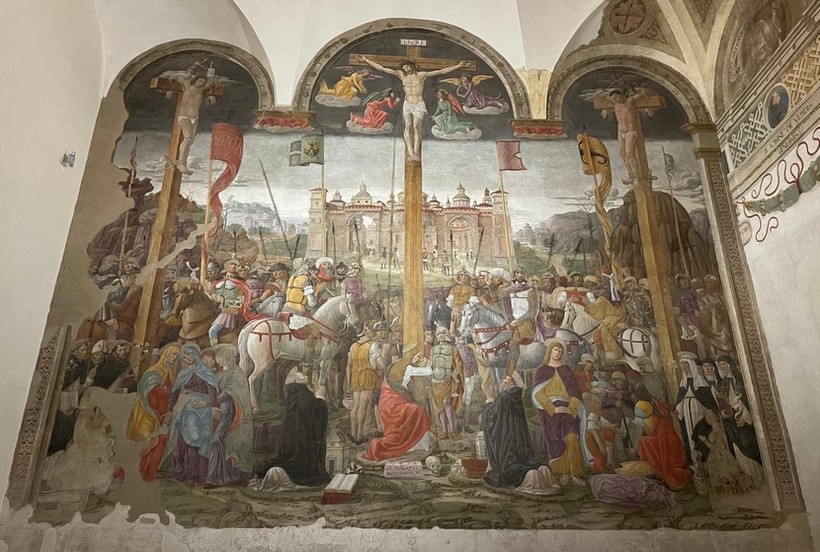
On the opposite side of the refectory is the painting "Crucifixion" by Giovanni Donato Montofano, 1473.

Near Cathedral, I loved Jollibee chicken and hot siopao asado (2 euros, 3 for 5) from a young, enterprising Pinoy's bike cart.
Turin, Italy
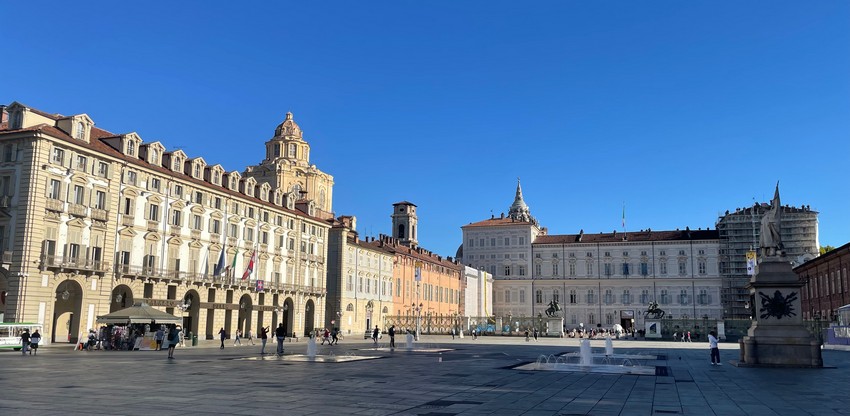
Piazza Castello, the 15th century Turin central square; and Palazzo Reale, the 17th century palace of the Duke of Savoy.
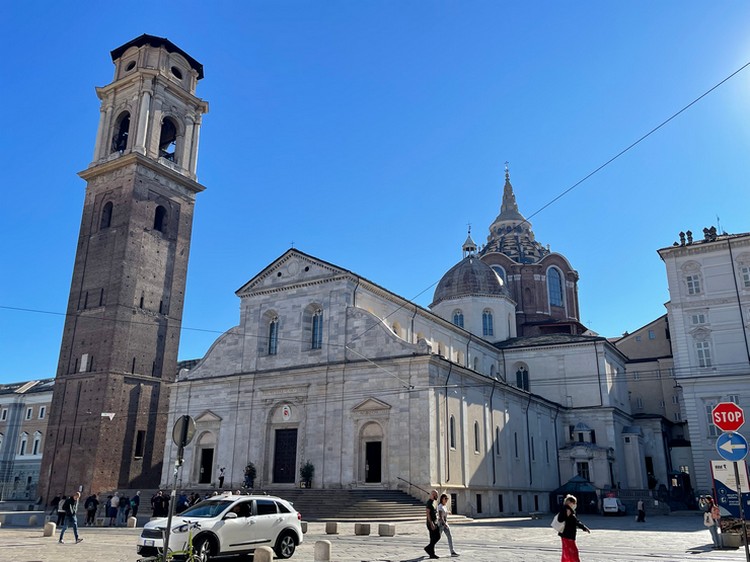
The Shroud of Turin is housed in the Cathedral of San Giovanni Batista, the Duomo of Torino, last displayed in public in 2015.
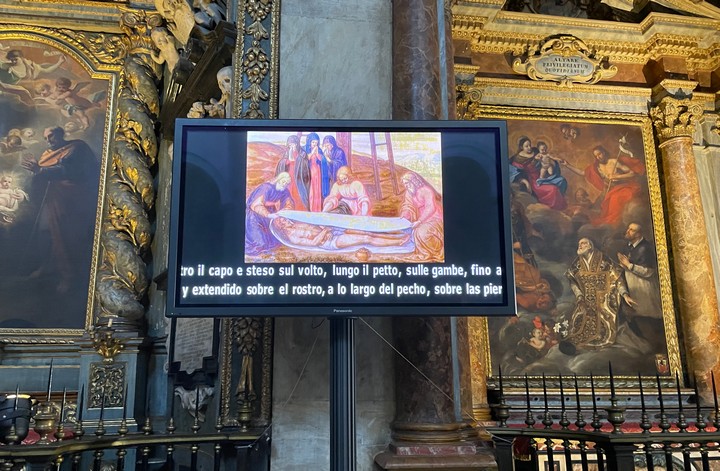
The 14-foot old linen cloth is believed to be the cloth that was used to wrap the crucified body of Jesus.
Historically found by a knight in 1354 in southern France, carbon-14 dating has questioned its authenticity.
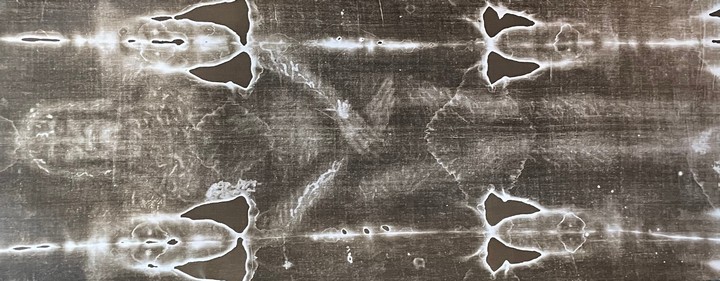
Christians continue to venerate the shroud as an "inspiring image of Christ". The impression on the shroud also shows
a wound in the side of the man's body, consistent with the wound said to have been inflicted on Jesus Christ.
Cinque Terre, Italy
(5 cliffside towns: Monterosso, Vernazza, Corniglia, Manarola and Riomaggiore)
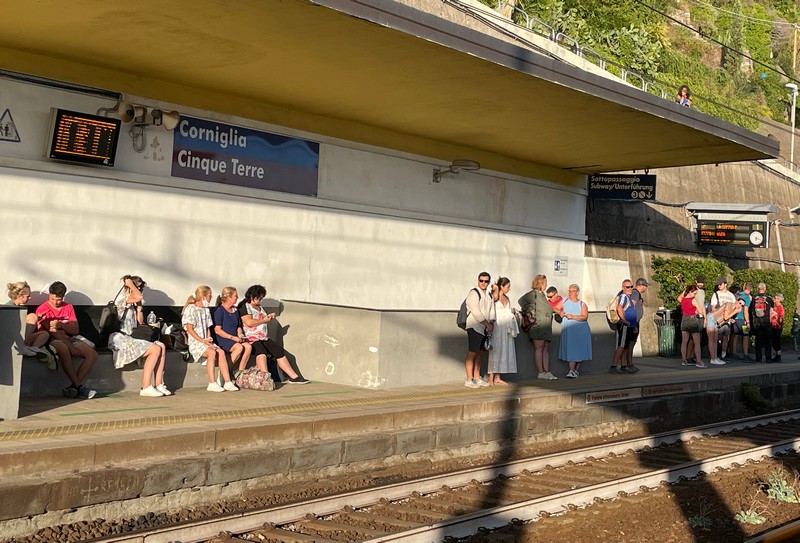
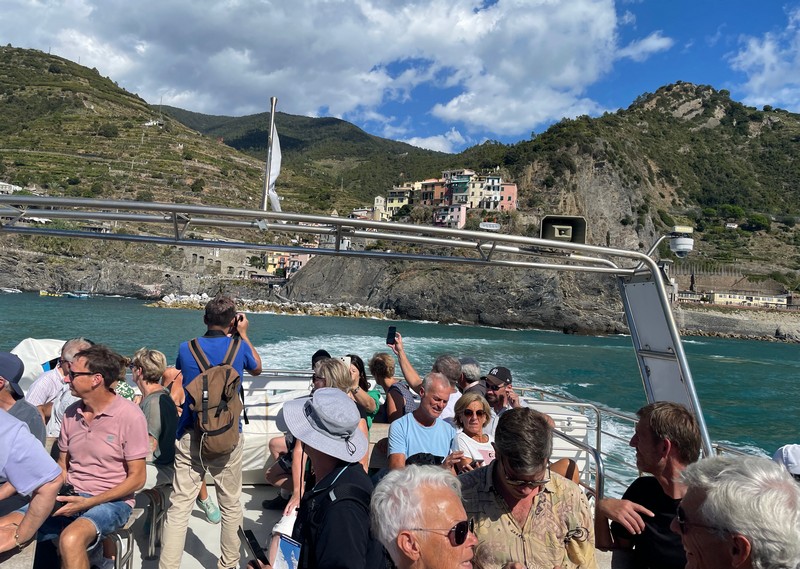
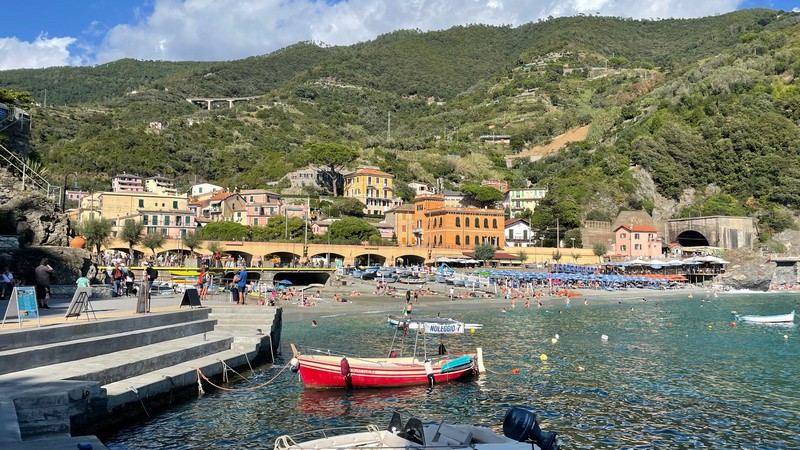
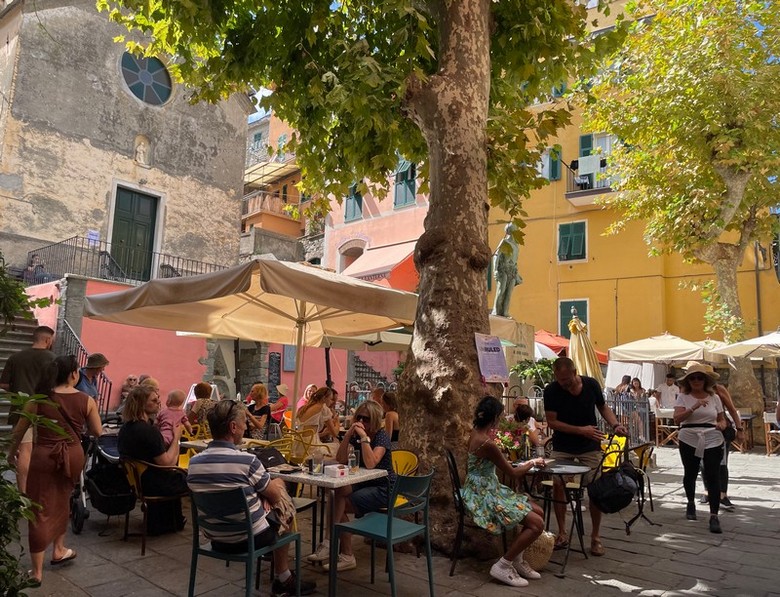
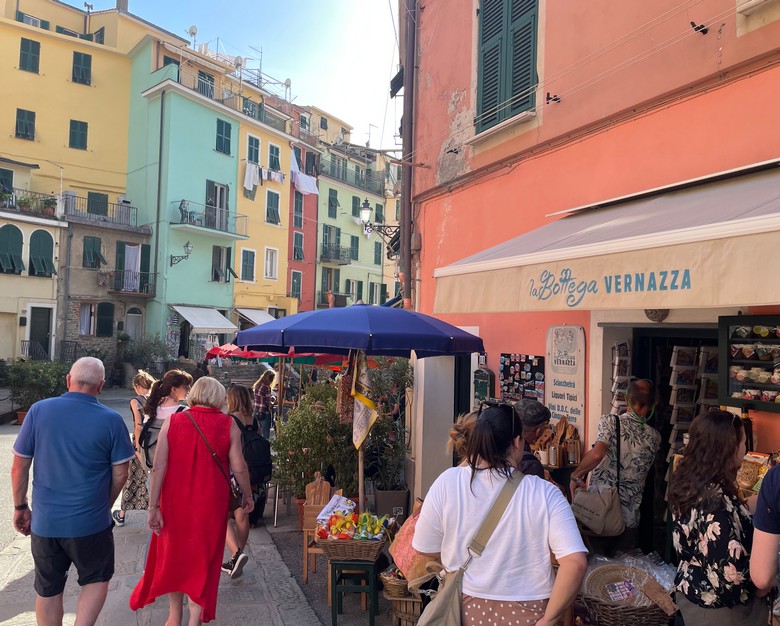
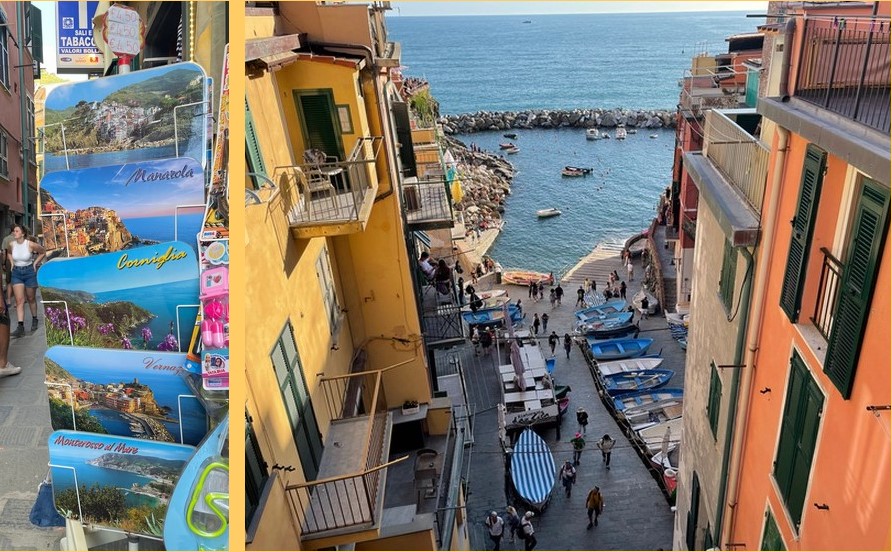
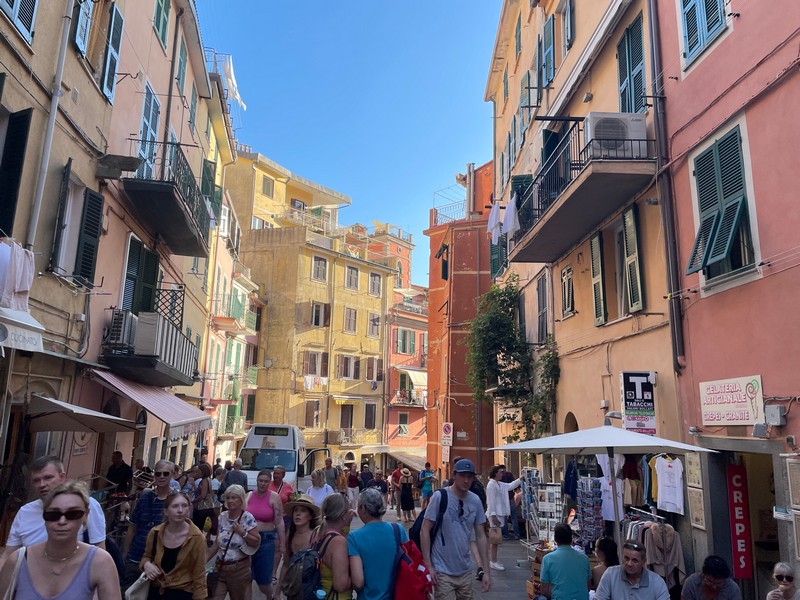
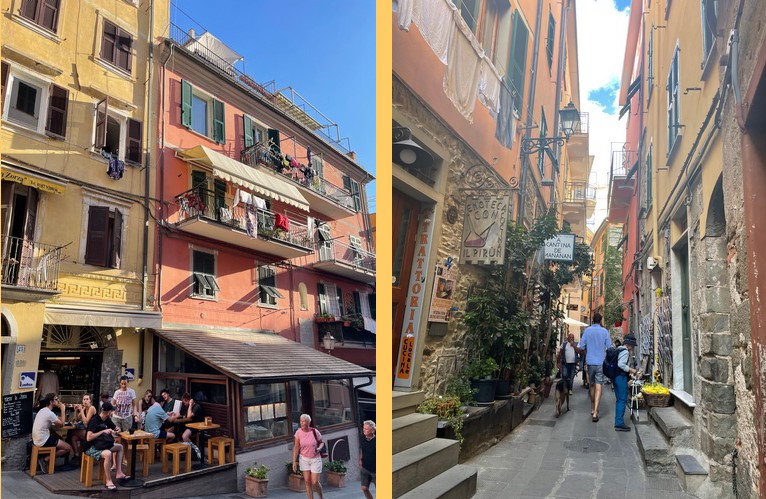
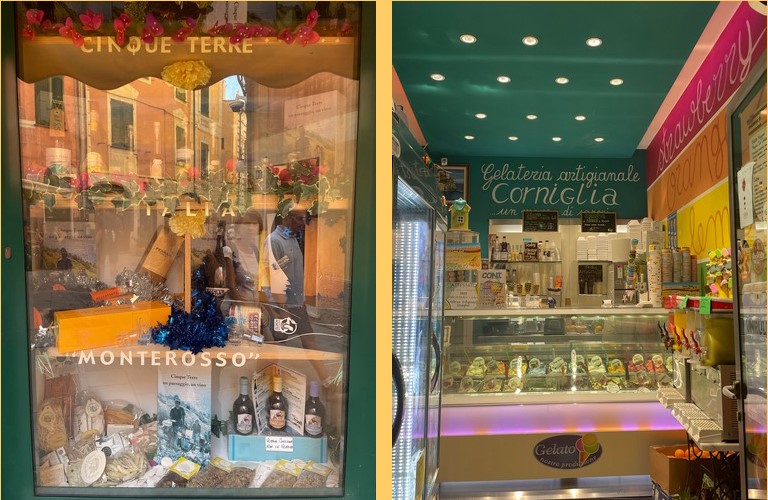
Venice, Italy
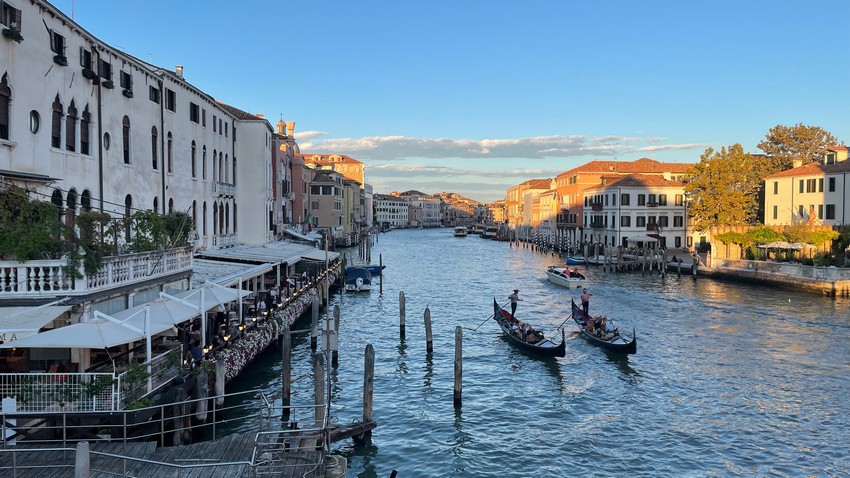
Gondolas on the canal
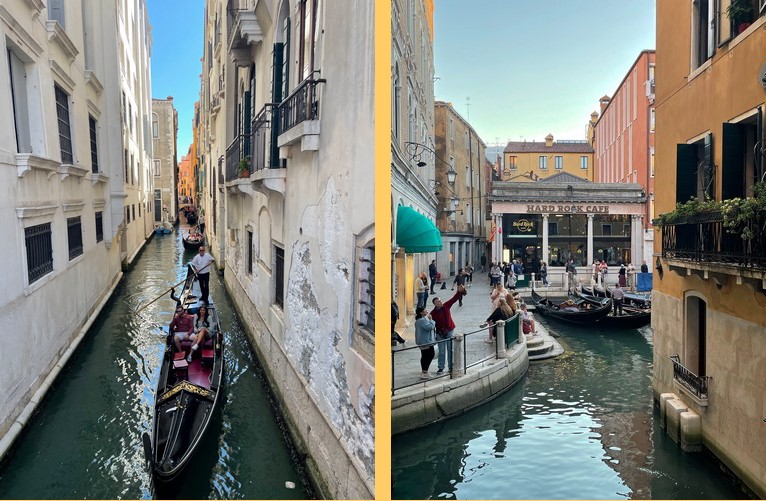
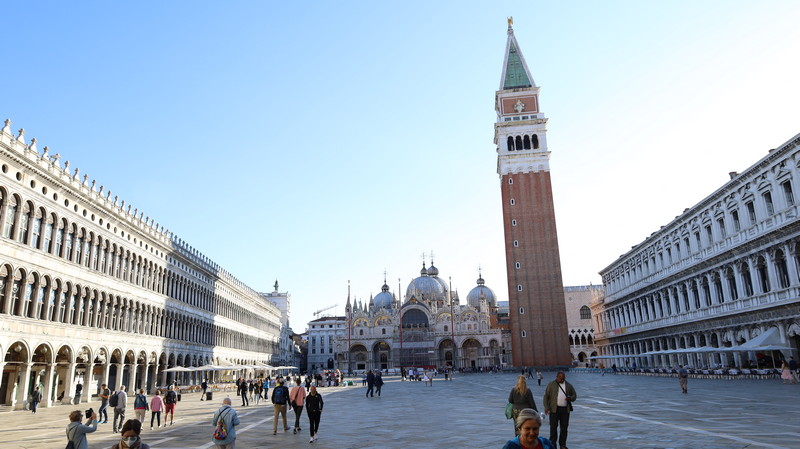
St. Mark's Square (Piazza del Marco)
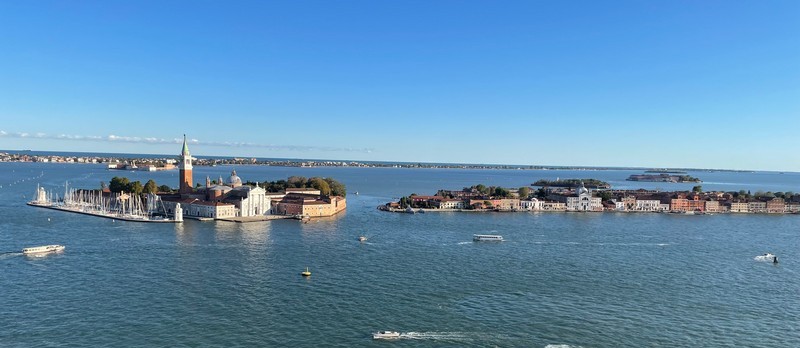
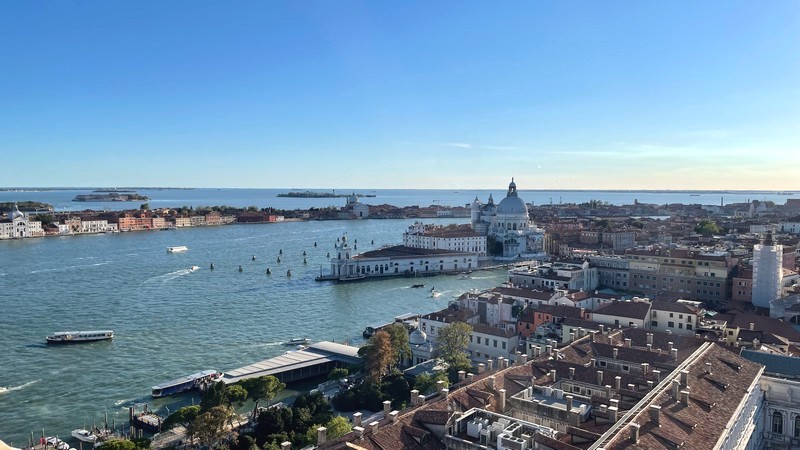
View from the top of the Bell Tower
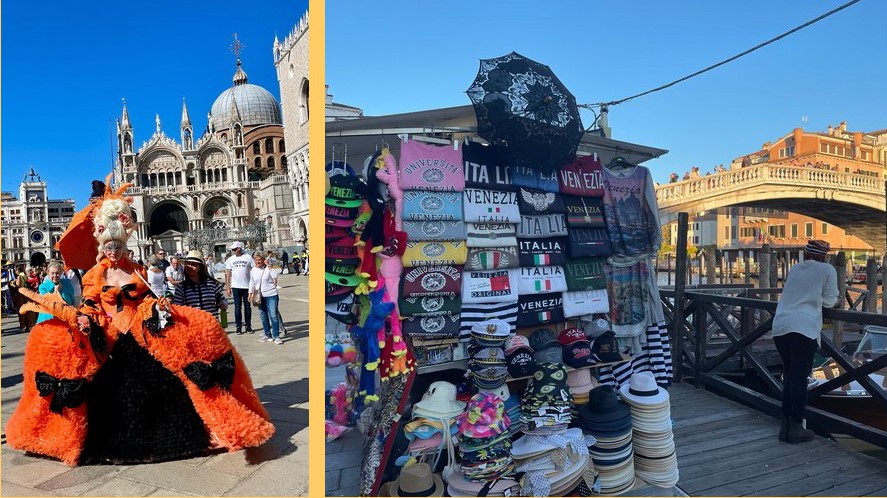
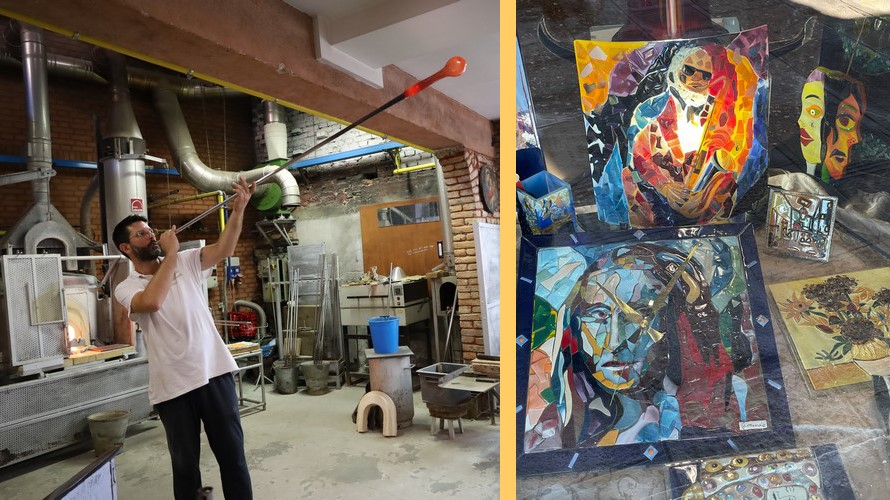
I took the "Lagoon Tour" to the charming islands of Murano and Burano. Murano is known for its glass craftsmanship and quality.

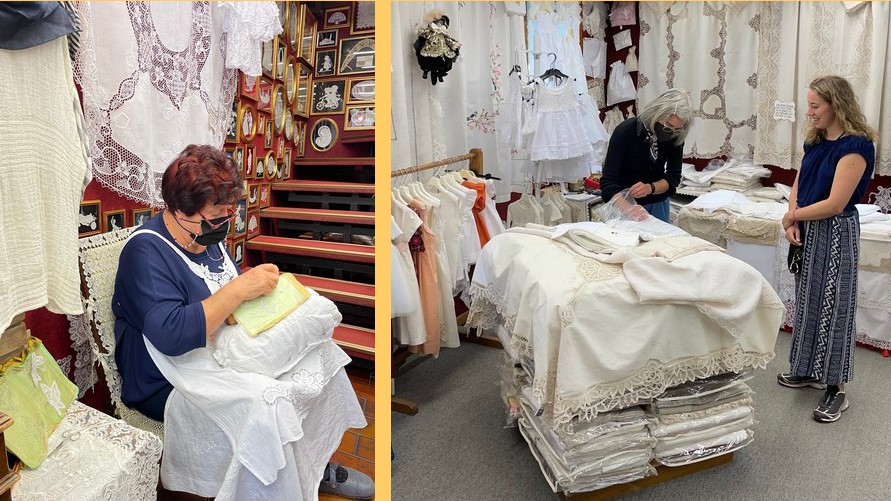
Burano is known for its intricate lacework beginning in the 16th century and its colorful houses.
Novafeltria, Italy
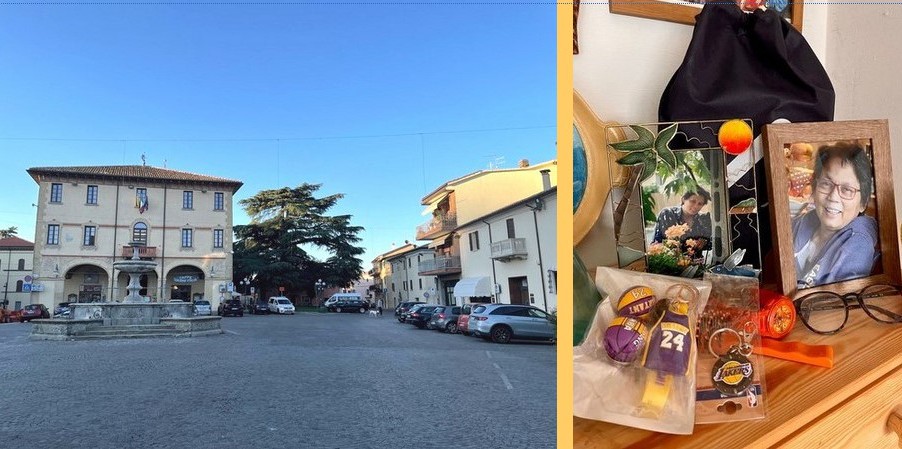
My niece, Dixie Bituin de Leon-Alessi, passed away in April before I could give her the Lakers souvenirs she wanted. I kept my promise to visit.
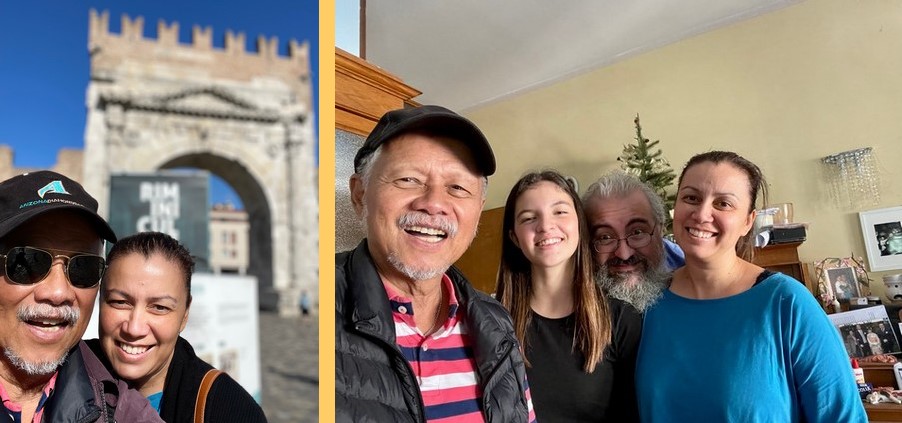
The "Italian connection" of the Bituin clan: Dixie's daughter, Laila; Laila's daughter Ali and husband Luigi at their home in Novafeltria.
*********************************************************
Snapshots: Southern Italy land tour
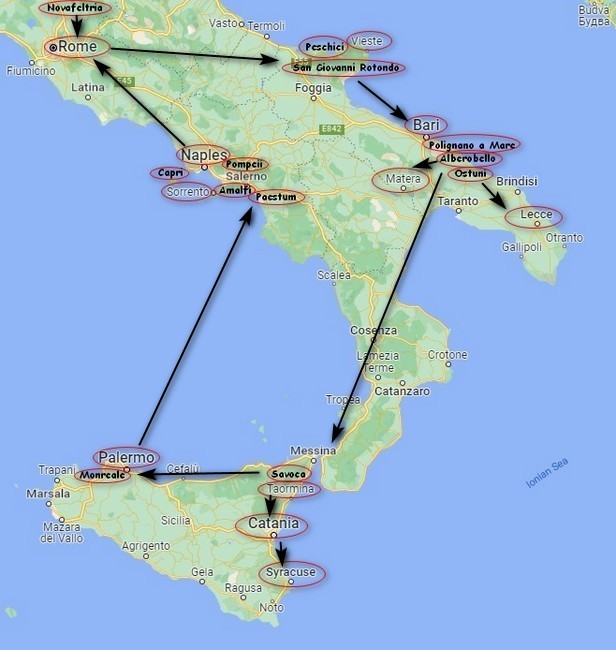
Starting at Rome, now with Cherry's group, we rode in Luca's 8-seater Mercedes Benz van.
Padre Pio, born May 25, 1887 in Pietrelcina, lived here from 1910 to his death in Sep. 23, 1968. He received his 1st (of 5) stigmata in 1910.
The Sanctuary/Shrine of Saint Pio has a surface area of 6,000 square meters and can accommodate 6,500 people seated at worship.
Padre Pio's body is displayed on the altar. He was canonized by Pope John Paul II on June 16, 2022 at St. Peter's Square.
Luca's mother-in-law, Gabriella, owns a leather bag and accessories store in town. She customized a leather belt for me.
A UNESCO World Heritage Site, trulli homes are built with dry-stone masonry (no mortar) and have existed since the 8th century.
Constructed in 1197, the Basilica of San Nicola in Bari is dedicated to Saint Nicolas who lived in the 4th century.
The concept of Santa Claus originated from this patron saint who was known for giving generous gifts to the poor.
Our Airbnb in Ceglie Messapica consists of 5 farm houses secluded away from town.
Lecce's Cattedrale dell Assunzione della Vergine was first built in 1144, but underwent repairs in 1230. It was rebuilt in 1659.
'The White City"
The cave houses have been inhabited for 10,000 years. It became a "national disgrace" with inhabitants living with no running water or electricity.
But the locals restored and rebuilt with hotels, bars, etc. Matera is now a UNESCO Heritage Site. Mel Gibson's "Passion of Christ" was filmed here.

To cross from mainland Italy at Reggio Calabria to Messina, Sicily is a 25-minute ferry ride.
Bar Vitelli is where "The Godfather" was filmed in 1972. The scene was when Michael Corleone talked to
the angry owner of the bar after he saw and was struck by his beautiful daughter Apollonia, whom he married.
Inside the original Bar Vitelli is a small museum of "The Godfather" with pictures and artifacts from the movie set.
Our Airbnb at Castelmola overlooks Mount Etna. Guests, said the caretaker, were treated to a volcanic fireworks in Feb. 2022.
At Mount Etna Visitor Center, when we visited cable cars going to the top were not operating due to the strong wind.
Souvenirs on wheels and the Catania Fish Market.
Southern Italy cuisine
With its fresh fish and seafood catch, here are some dishes we've enjoyed. The prices are
remarkably cheaper than in the North.
Monreale's Cathedral of Santa Maria Nuova dates back to the Norman era (1174) and was built by King William II.
Inside are more than 6,000 square meters of gold-ground mosaics depicting episodes from the Gospel.
Palermo, the capital of Sicily. The Quattro Canti (Four Corners) intersection.
The Palermo Cathedral was erected in 1185 by the Archbishop of Palermo on the area of an earlier Byzantine basilica.
To cross from Palermo, Sicily back to mainland Italy at Salerno is a 9.5 hour overnight ferry ride.
Paestum, 40 kms. from Salerno, was a Greek city with temples, walls and ampitheatre dating about 550 to 450 BC.
Our Airbnb cliffside villa at Massa Lubrense, near Sorrento, has view of the Tyrrhenian Sea and the island of Capri.
Pompeii was buried under meters of ash and pumice after the catastrophic eruption of Mount Vesuvius in 79 AD.
Naples, 9 miles from Mount Vesuvius which geologists agree is overdue for eruption, escaped the 79 AD eruption because of the
direction of the wind. Experts estimate a VEI-4/5 eruption could kill over 10,000 with a cost of over $20 billion to the Italian economy.
Naples' seaside boulevard lined with hotels and restaurants. Eruption - not in our lifetime, we hope.
Piazza del Plebiscito, the main public square with the Royal Palace, plays host to many cultural events.
On our last day, we're taking a private boat ride to the island of Capri.
Exploring the caves
The Three Rocks, the postcard symbol of Capri, have been given a name - Stella, Mezzo and Scapolo.
Arrivederci, Italia!!